
Creating Common Goals
These tools will help you identify your community’s strengths around child maltreatment prevention and the promotion of positive outcomes for children, and where you have gaps. Understanding more clearly what is needed helps to create momentum and ascertain common goals.
- Identify the Problem
- Solutions
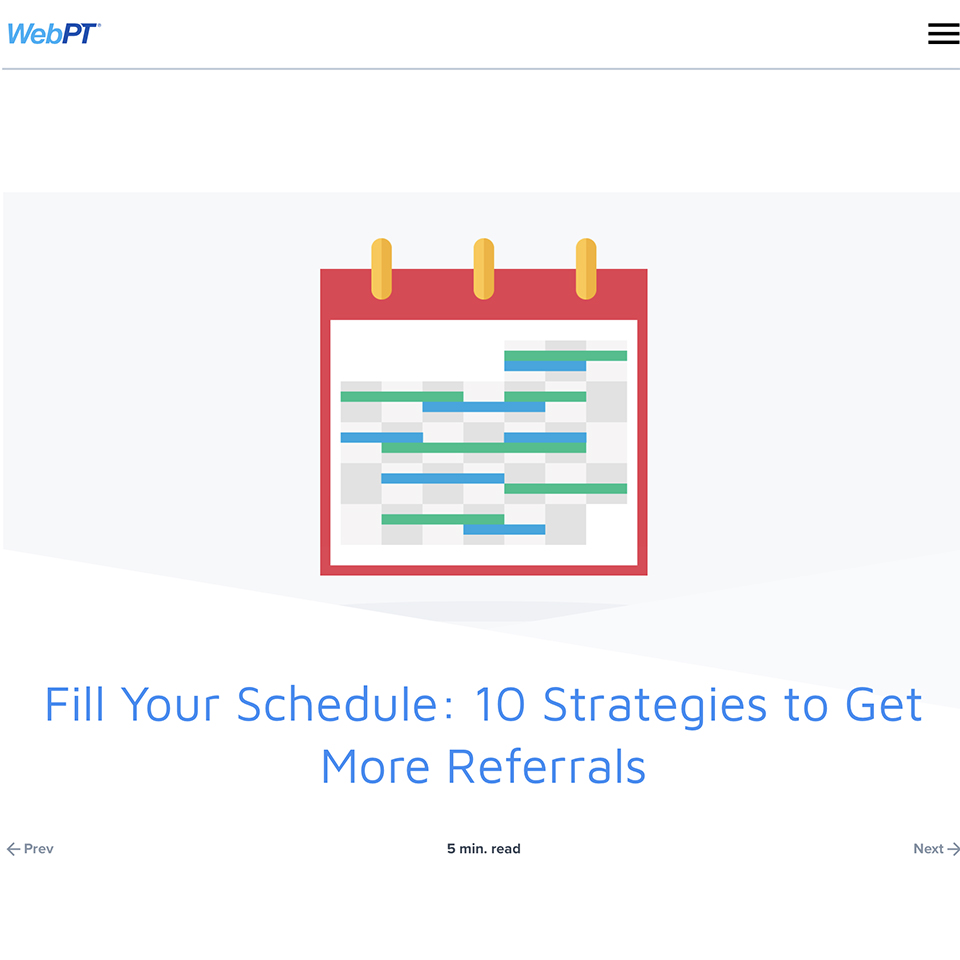
10 Strategies to Get More Referrals
Here are ten strategies that will help you build your own effective referral network. For a more comprehensive look at physical therapy marketing best practices, be sure to check out the free PT marketing guide at the end of the article.
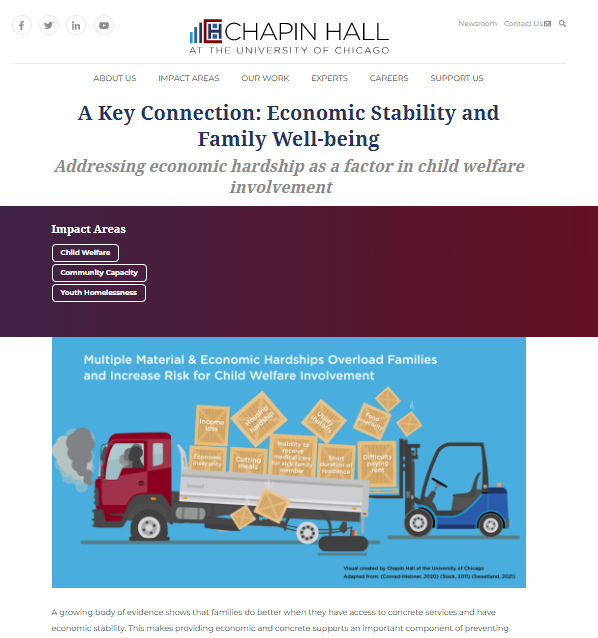
A Key Connection: Economic Stability and Family Well-being
Chapin Hall experts have brought together evidence about the connections between economic and concrete supports and involvement with child welfare. This website has numerous resources about supporting families and child welfare through an economic perspective.

A Roadmap for Advancing Family Engaged Developmental Monitoring
The purpose of "A Roadmap for Advancing Family-Engaged Developmental Monitoring" (the Roadmap) is to introduce and describe family-engaged developmental monitoring (FEDM) as a key component of a framework for children’s healthy development and family well-being that includes developmental promotion, FEDM, screening, referral, and receipt of services.
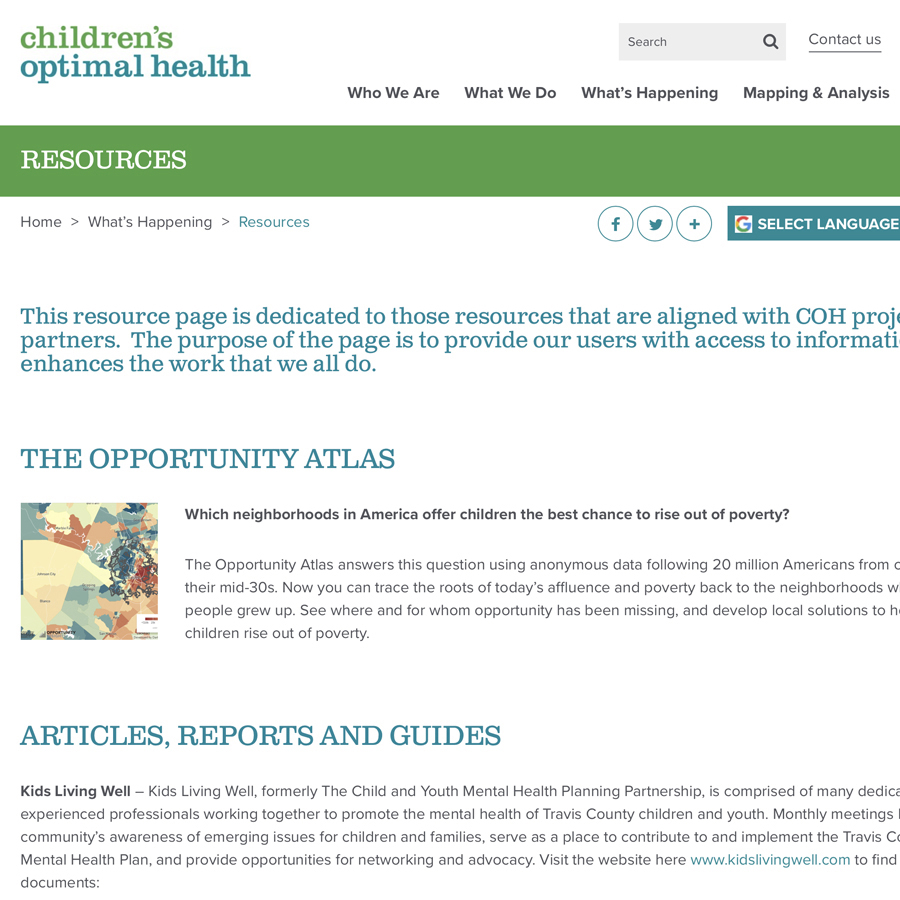
Children’s Optimal Health
Optimal Health is a collective leadership initiative that unites the efforts of Central Texas organizations in promoting community change to help our children reach a brighter future. They provide Resource and Community Mapping Tools to provide users with access to information that enhances their work.
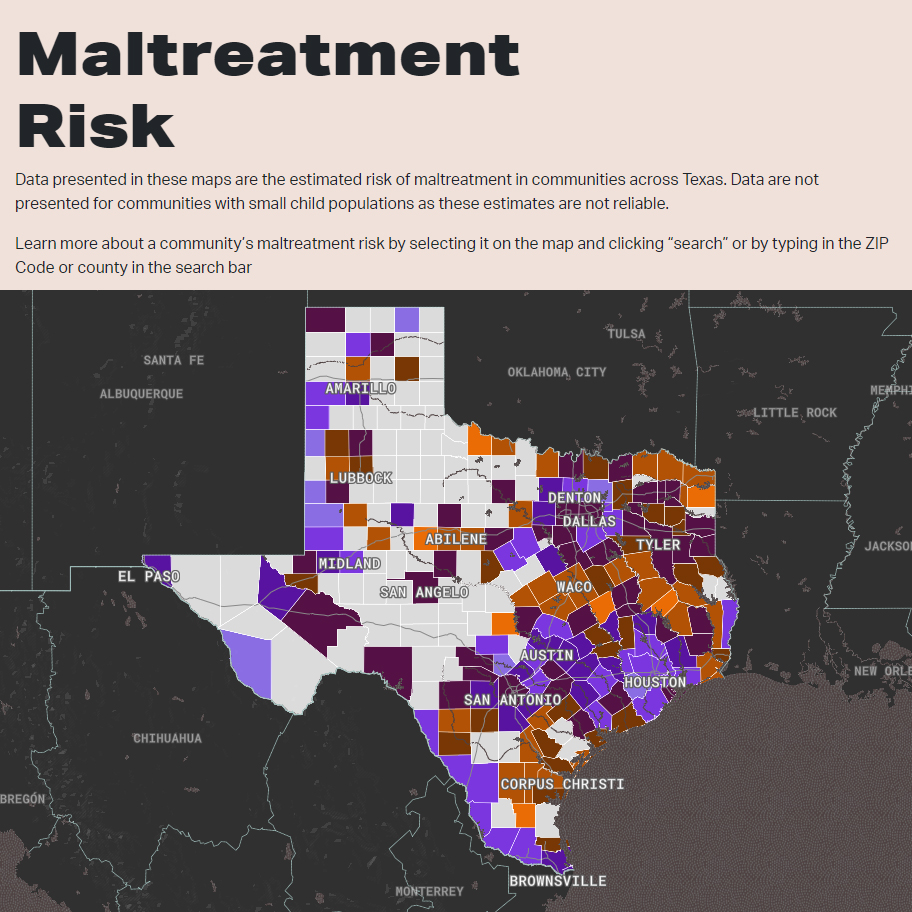
Community Maltreatment Risk Maps
These maps are intended to provide communities in Texas with information about their maltreatment risk and to provide insight as to which factors are associated with that risk. PEI webinars forthcoming.
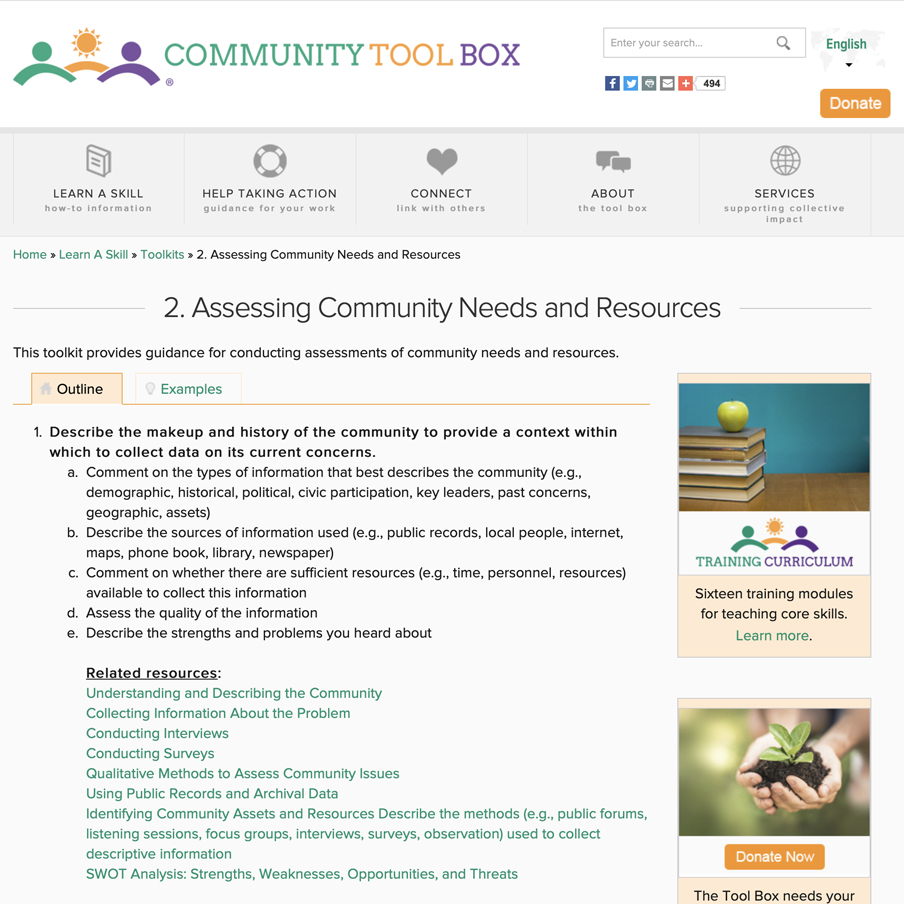
Community Tool Box
The University of Kansas Center for Community Health Development created the Community Tool Box in collaboration with national and international partners. It’s a free online resource for those working to build healthier communities and bring about social change. The section on Assessing Community Needs and Resources provides an outline for writing a community needs assessment, related resources, and examples.
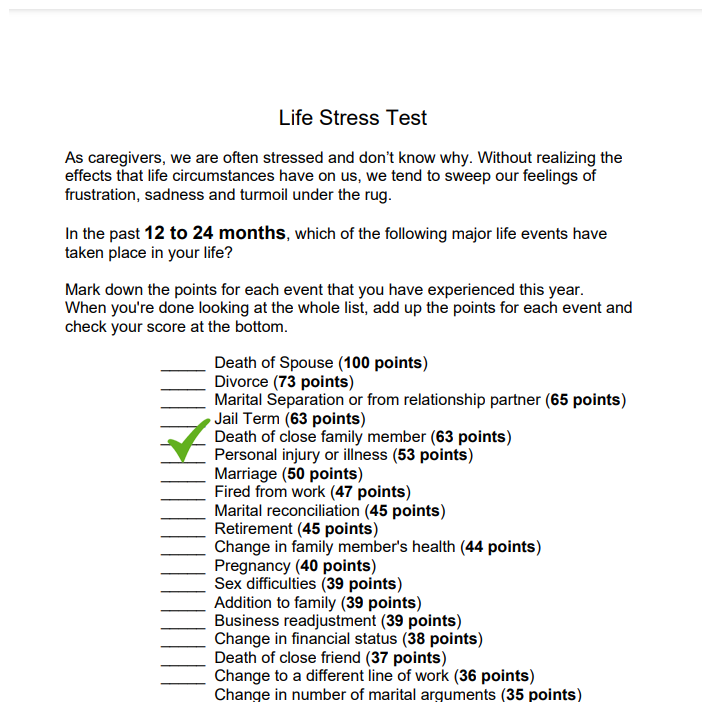
Compassion Fatigue
Use this Life Stress Test to objectively evaluate the amount of pressure you are facing. As caregivers, we are often stressed and don’t know why. Without realizing the effects that life circumstances have on us, we tend to sweep our feelings of frustration, sadness, and turmoil under the rug.
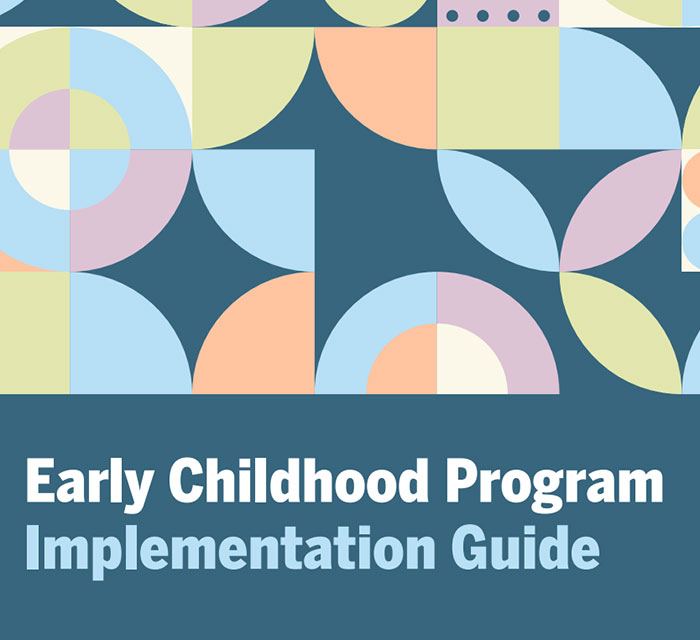
Early Childhood Program Implementation Guide
This early childhood implementation guide is intended for use by state agencies, community-based programs, and community coalitions to provide guidance information regarding the landscape of early childhood programs in Texas and the best practices for program implementation.
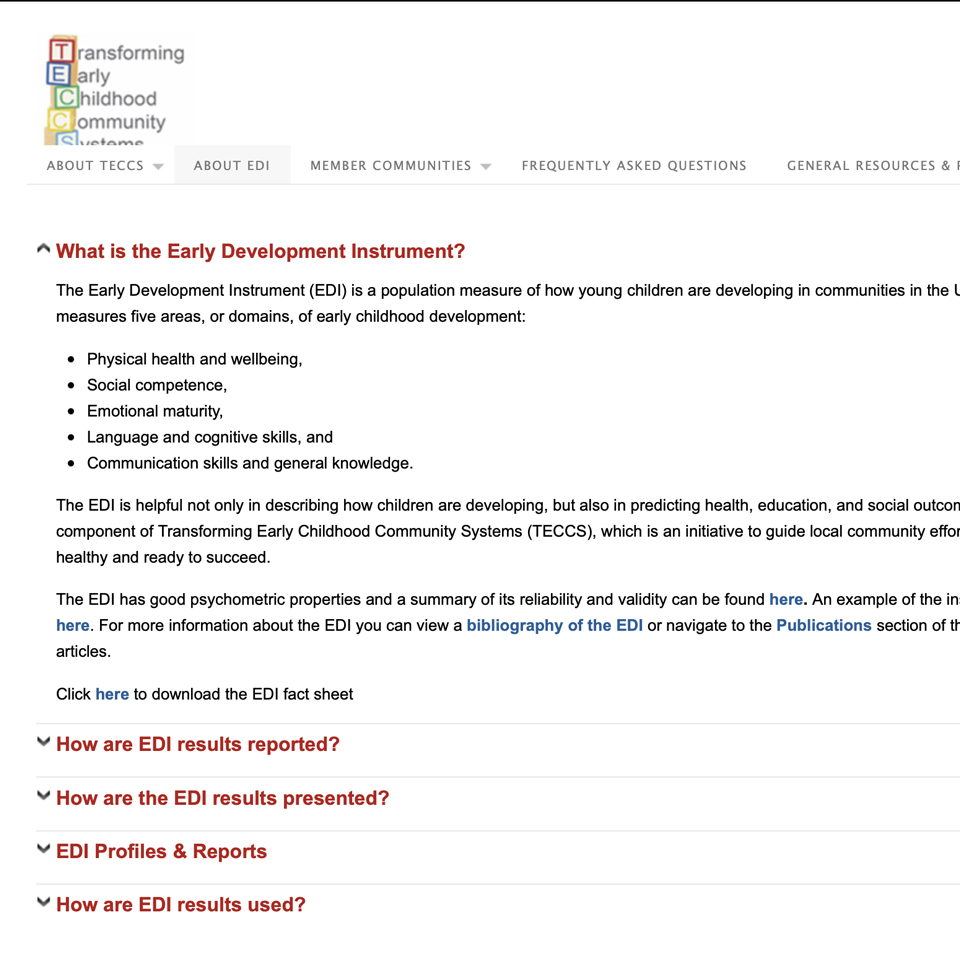
Early Development Instrument
The Early Development Instrument (EDI) is a population measure of how young children are developing in communities in the United States. The EDI measures five areas, or domains, of early childhood development:
- Physical health and wellbeing
- Social competence
- Emotional maturity
- Language and cognitive skills
- Communication skills and general knowledge
The EDI is helpful not only in describing how children are developing, but also in predicting health, education, and social outcomes. EDI data are a key component of Transforming Early Childhood Community Systems (TECCS), which is an initiative to guide local community efforts to help children reach school healthy and ready to succeed.
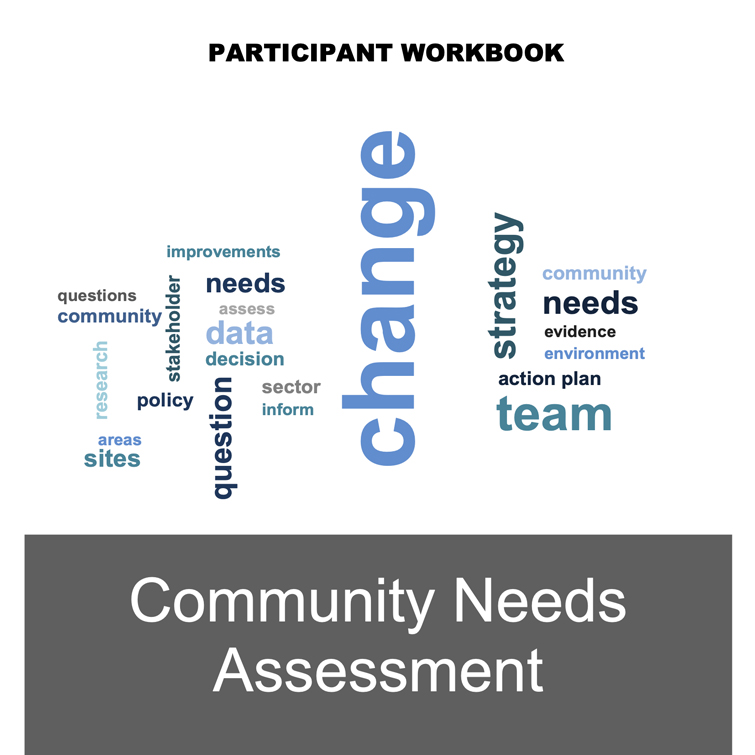
How to Conduct a Community Needs Assessment
A workbook to help community members plan for, collect data, summarize data, develop priorities, and create a community action plan as part of the needs assessment process.
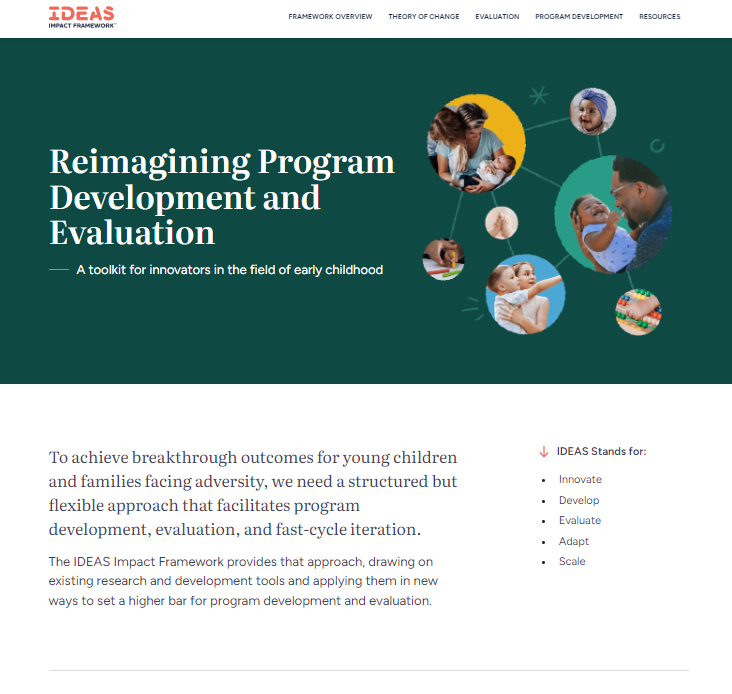
IDEAS Impact Framework
The IDEAS Impact Framework is a toolkit for innovators in the field of early childhood. It provides a structured but flexible approach that facilitates program development, evaluation, and fast-cycle iteration to support positive outcomes for young children and families.
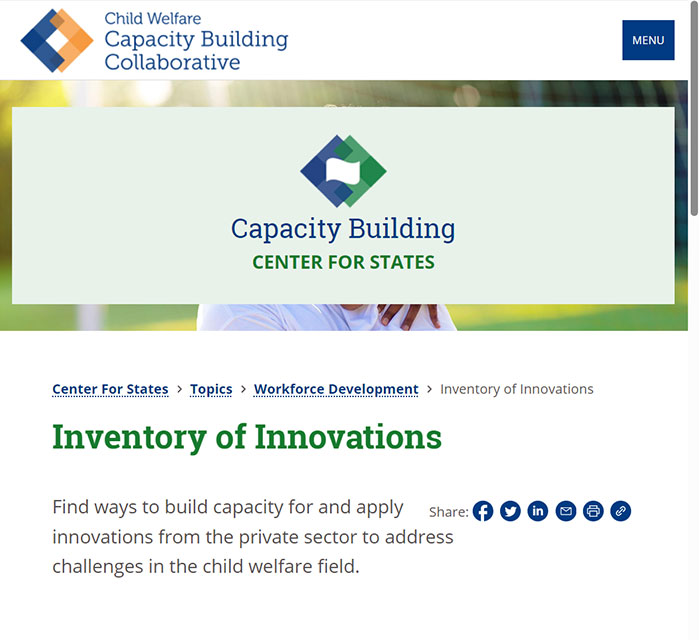
Inventory of Innovations
Find ways to build capacity for and apply innovations from the private sector to address challenges in the child welfare field. This series addresses the need for current information about innovations in child welfare that present possible solutions to the challenges faced by state and jurisdictional agencies. In addition, the series suggests ways for child welfare agencies to build capacity for innovation and describes how to apply innovations from the private sector to address challenges in the child welfare field.
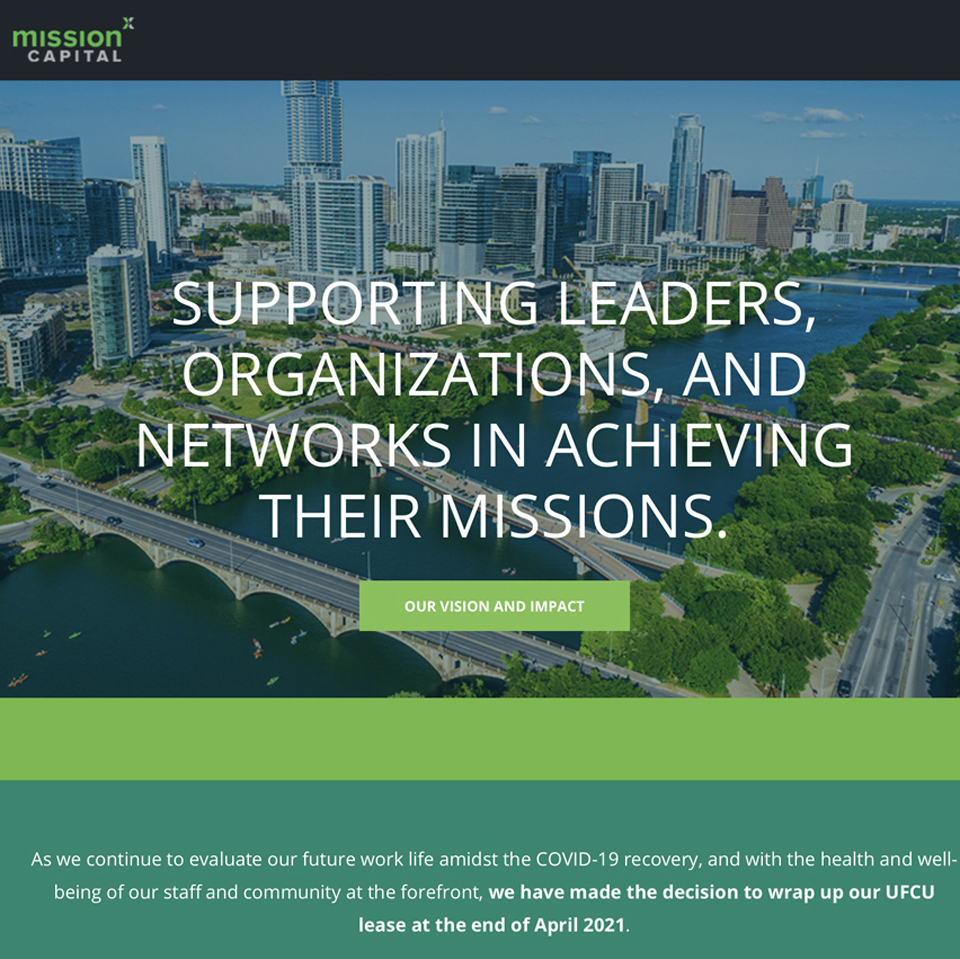
Mission Capital Research and Tools
Mission Capital provides the tools and guidance needed to tackle these complex issues and create lasting social change. We combine human, financial, intellectual, social and political capital to fuel the work of mission-driven people and organizations.
Vision: Complex community problems get solved.
Mission: We multiply the impact of mission-driven people and organizations.
From in-depth research to how-to documents, get the information and tools you need to answer your nonprofit and philanthropy questions.
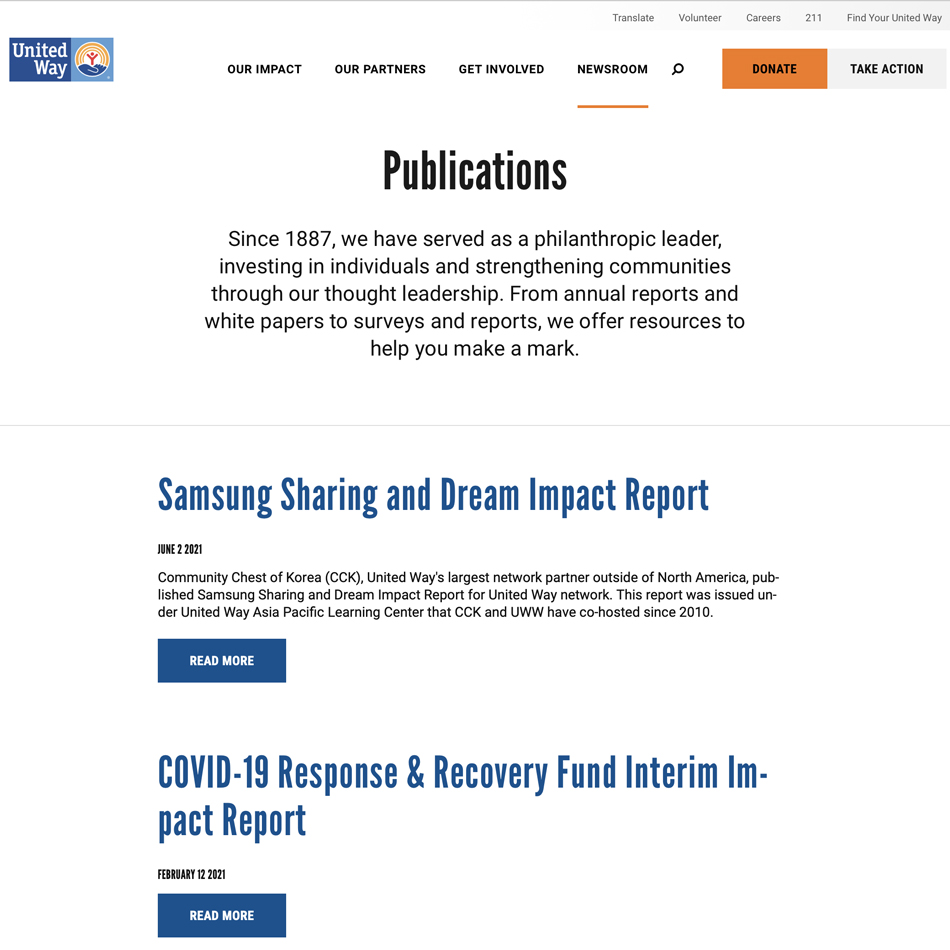
Publications & Research through United Way
Since 1887, United Way has served as a philanthropic leader, investing in individuals and strengthening communities through thought leadership. From annual reports and white papers to surveys and reports, this website offer resources to help you make a mark.
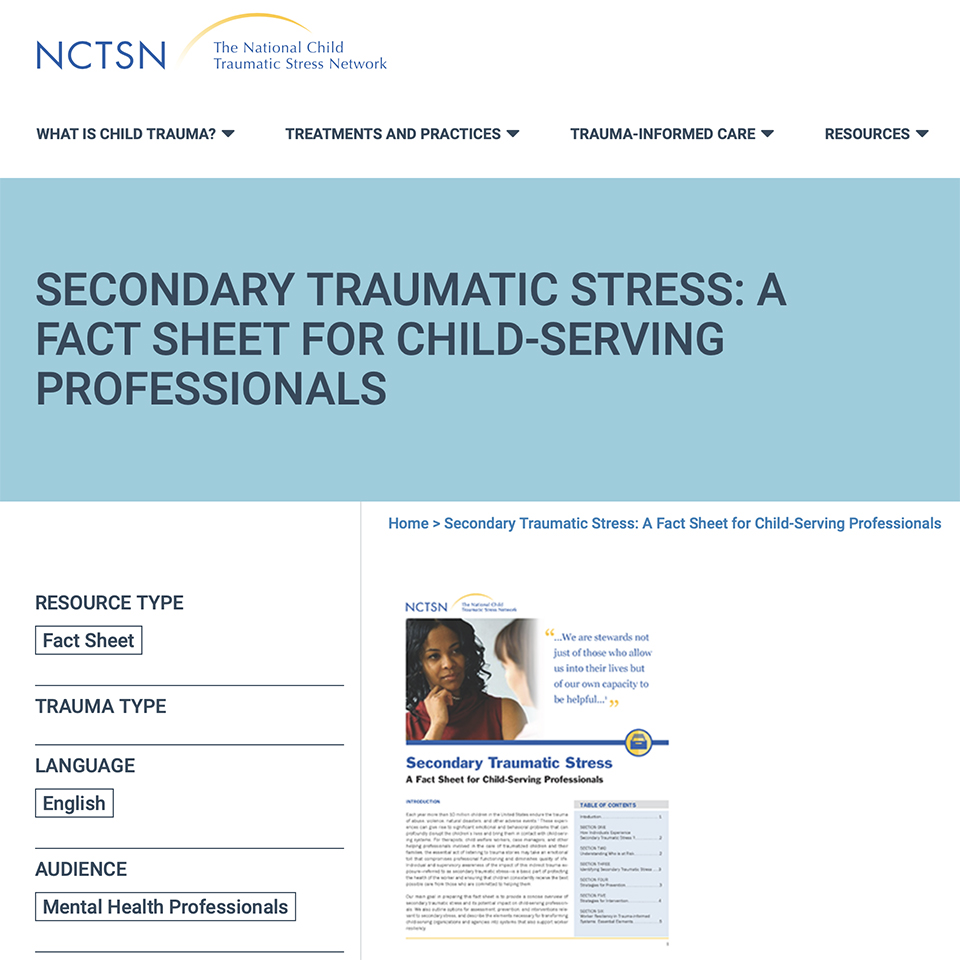
Secondary Trauma Stress (STS)
The National Child Traumatic Stess Network website offers child-serving professionals information about secondary traumatic stress (STS). The fact sheet in this link describes how individuals experience STS and offers an understanding of who is at risk, how to identify STS, strategies for prevention and intervention, and essential elements to address STS.
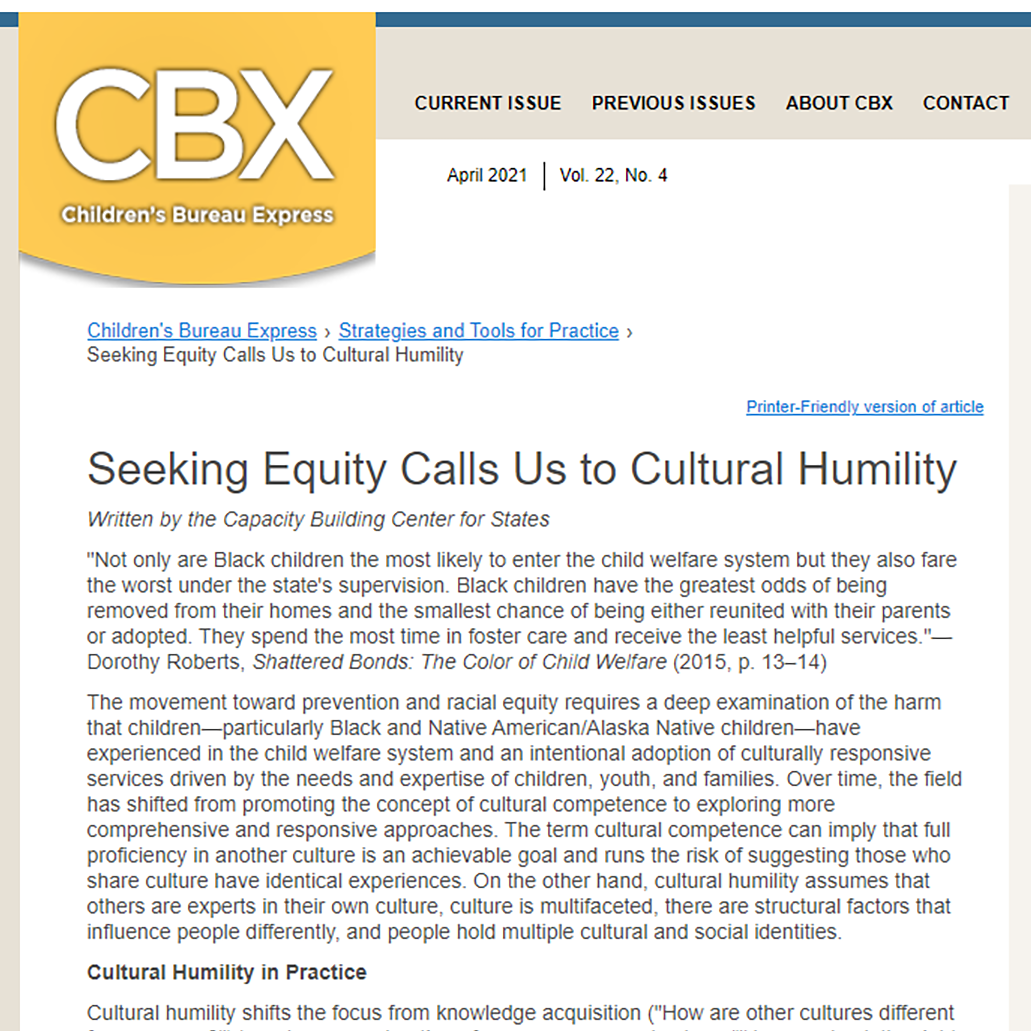
Seeking Equity Calls Us to Cultural Humility
The movement toward prevention and racial equity requires a deep examination of the harm that children—particularly Black and Native American/Alaska Native children—have experienced in the child welfare system and an intentional adoption of culturally responsive services driven by the needs and expertise of children, youth, and families.
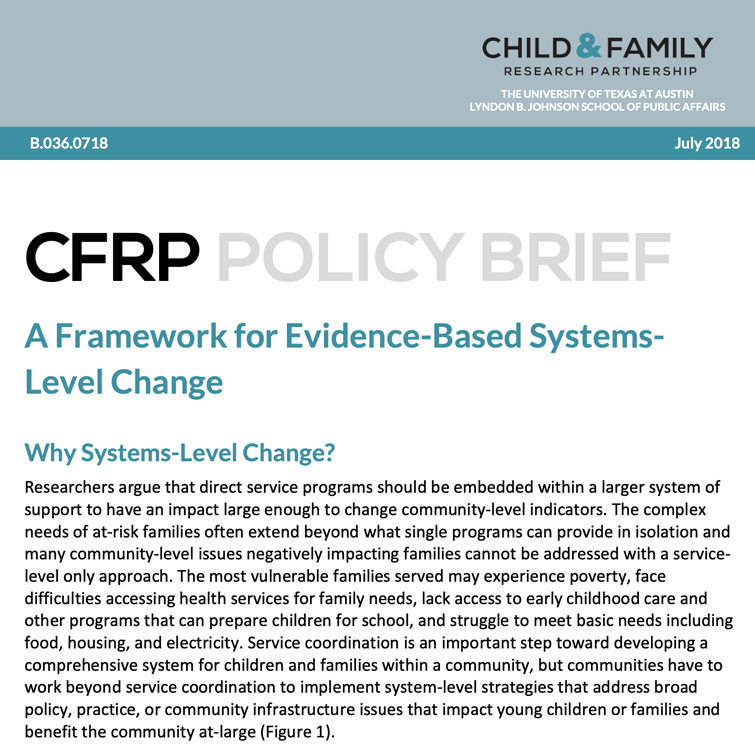
Systems-Level Change Report
This brief from the Child & Family Research Partnership (CFRP) sets up a framework for measuring community-level change based on evidence of what works in successful initiatives to move beyond individual agency impacts to system impacts.
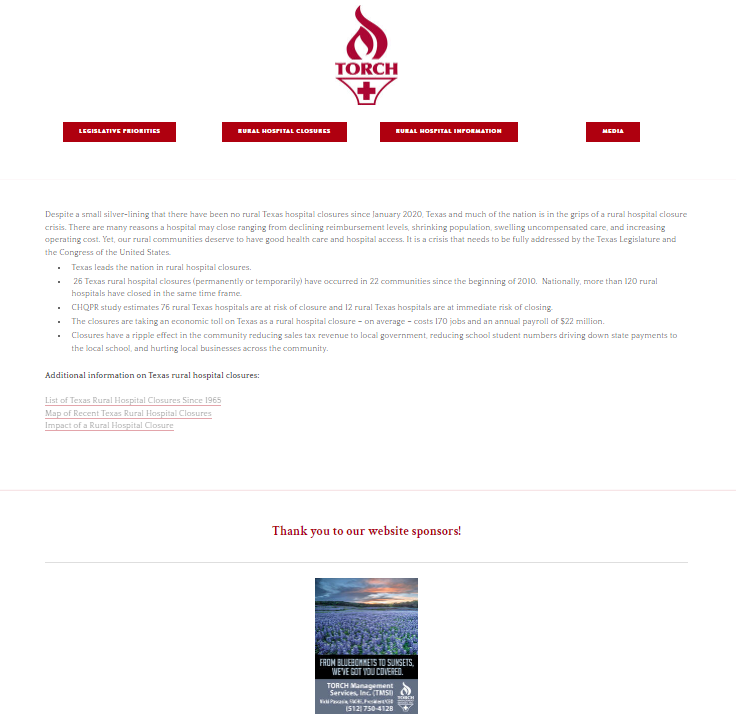
Texas Rural Hospital Closures
Rural hospital closures have been an issue across Texas over the past decade. The Texas Organization of Rural & Community Hospitals (TORCH) website includes detailed information on recent closures, as well as resources to support rural health care.
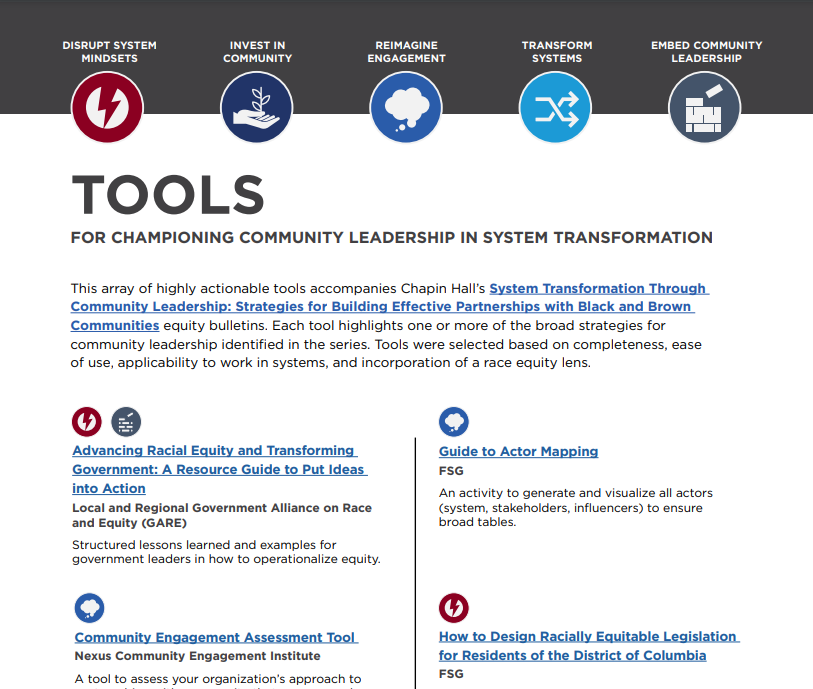
Tools for Championing Community Leadership in System Transformation
This toolkit highlights a number of broad strategies for community leadership, promoting equity, and establishing partnerships.
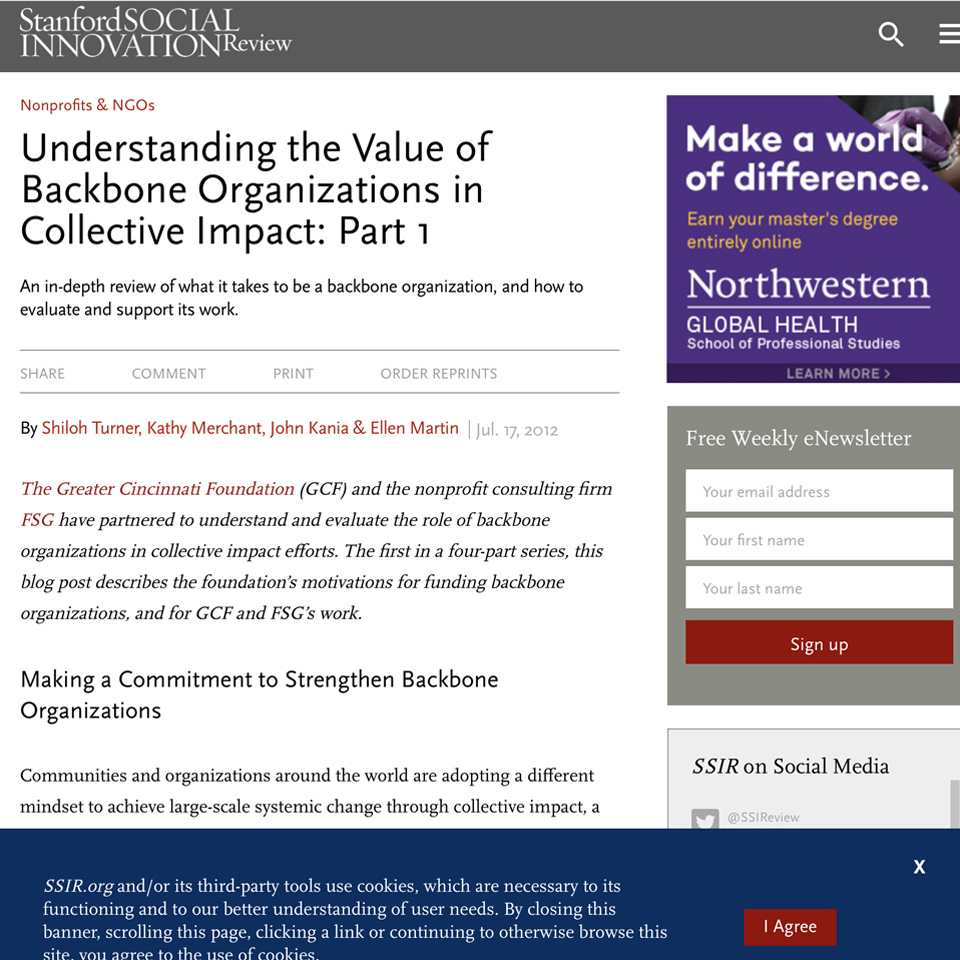
Understanding the Value of Backbone Organizations in Collective Impact: Part 1-4
The Greater Cincinnati Foundation (GCF) and the nonprofit consulting firm FSG partnered to understand and evaluate the role of backbone organizations in collective impact efforts. This four-part blog post provides an in-depth review of what it takes to be a backbone organization, and how to evaluate and support its work.
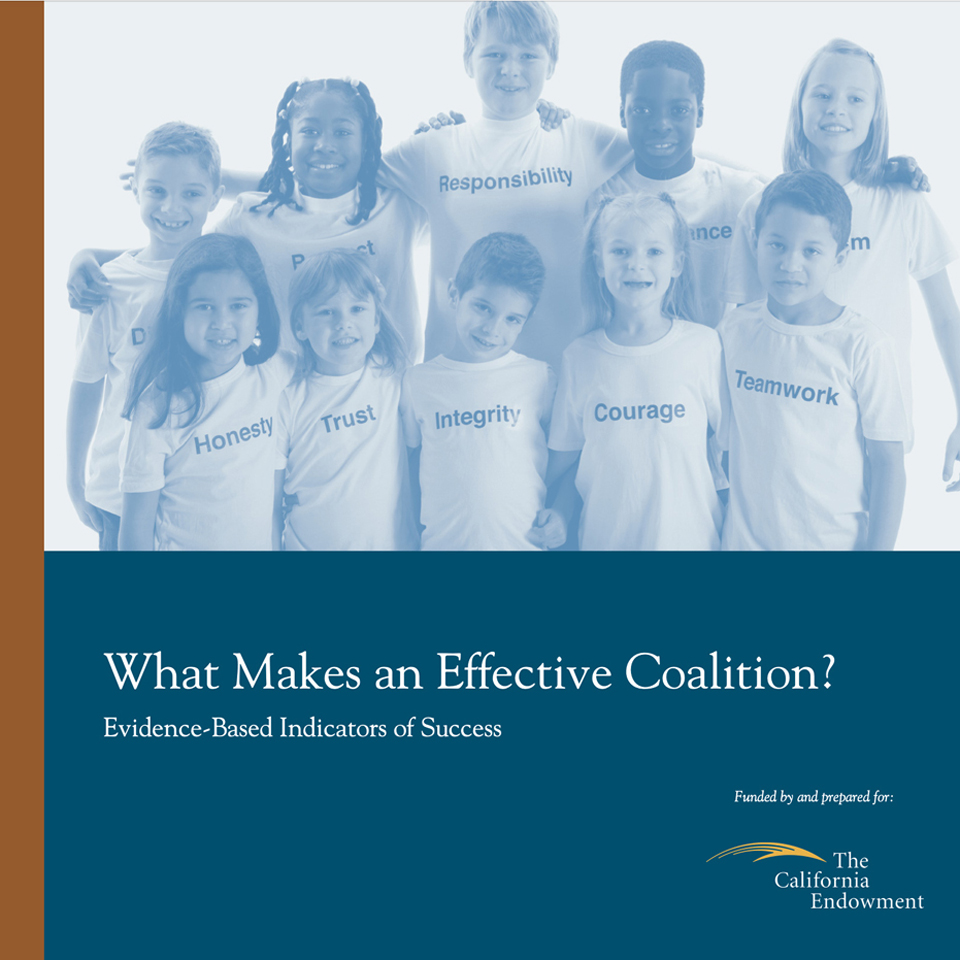
What Makes an Effective Coalition?
What are the crucial ingredients for an effective coalition or network, and how can they be cultivated and evaluated?
Based on a literature review and TCC Group’s own knowledge and experience, this briefing paper shares research on best practices with regard to effective advocacy coalitions. This work was commissioned by The California Endowment, a leading funder of policy advocacy efforts.

10 Strategies to Get More Referrals
Here are ten strategies that will help you build your own effective referral network. For a more comprehensive look at physical therapy marketing best practices, be sure to check out the free PT marketing guide at the end of the article.

A Roadmap for Advancing Family Engaged Developmental Monitoring
The purpose of "A Roadmap for Advancing Family-Engaged Developmental Monitoring" (the Roadmap) is to introduce and describe family-engaged developmental monitoring (FEDM) as a key component of a framework for children’s healthy development and family well-being that includes developmental promotion, FEDM, screening, referral, and receipt of services.
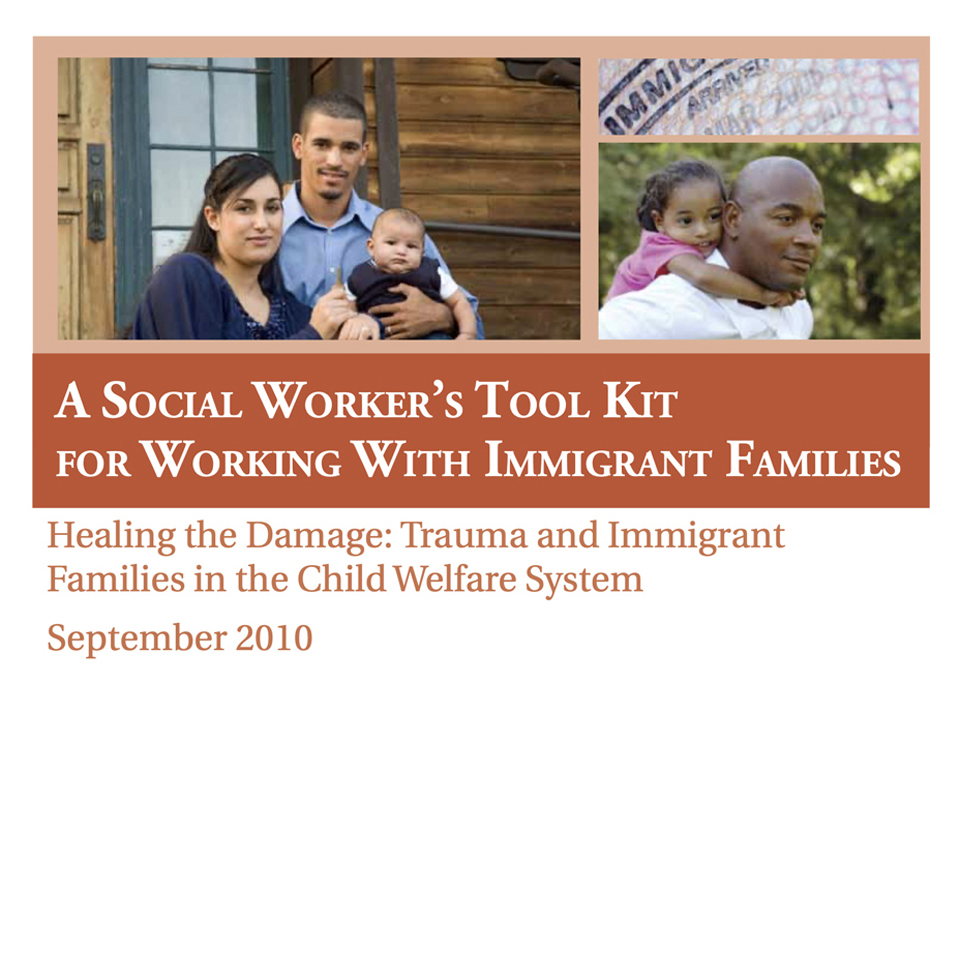
A Social Worker’s Toolkit for Working With Immigrant Families
This toolkit identifies trauma that immigrant families may experience from involvement with the Child Welfare System and the challenges professionals face in untangling the range of factors that contribute to an immigrant families’ capacity to protect and nurture their children.
Sections: Overview of Child Welfare Practice With Immigrant and Refugee Families, Guidelines for Integrating Child Welfare Practice With Trauma-Informed Care, Building Child Welfare Agency Capacity, and Case Examples.
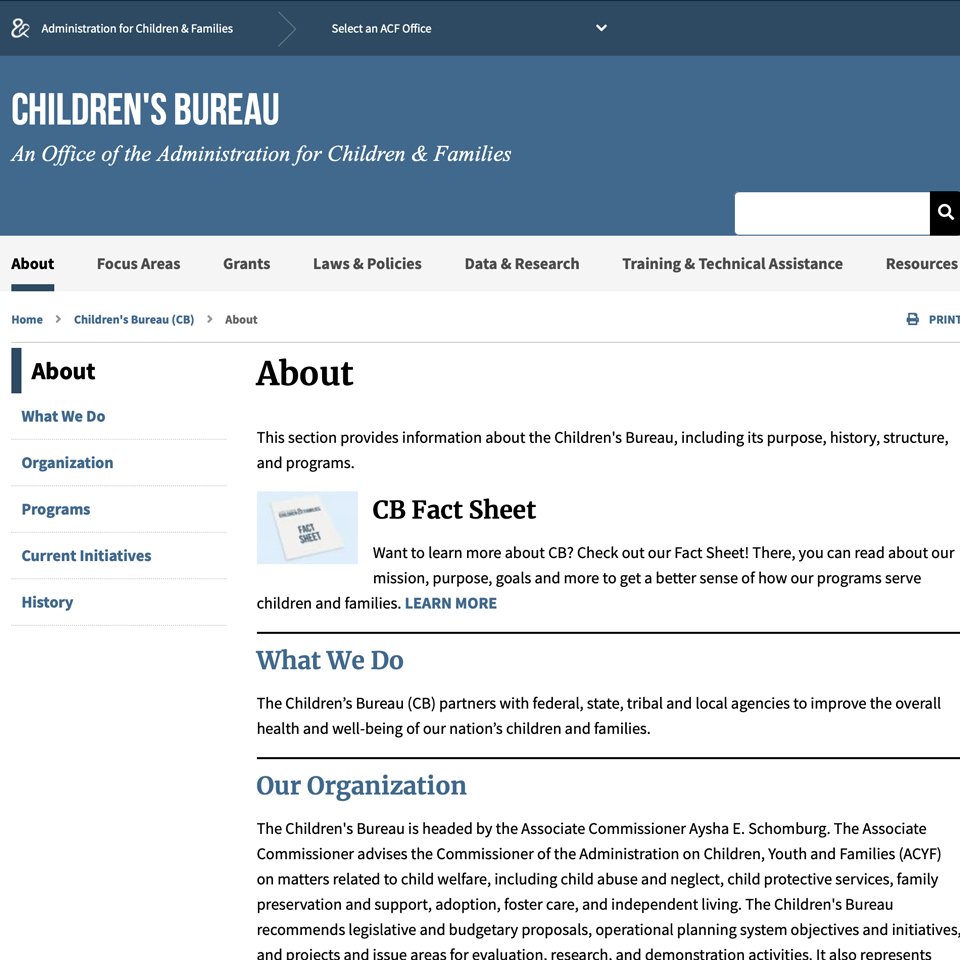
Administration for Children and Families
The Administration for Children & Families (ACF), a division of the U.S. Department of Health & Human Services (HHS), promotes the economic and social well-being of families, children, individuals and communities with funding, strategic partnerships, guidance, training and technical assistance.
Resources:
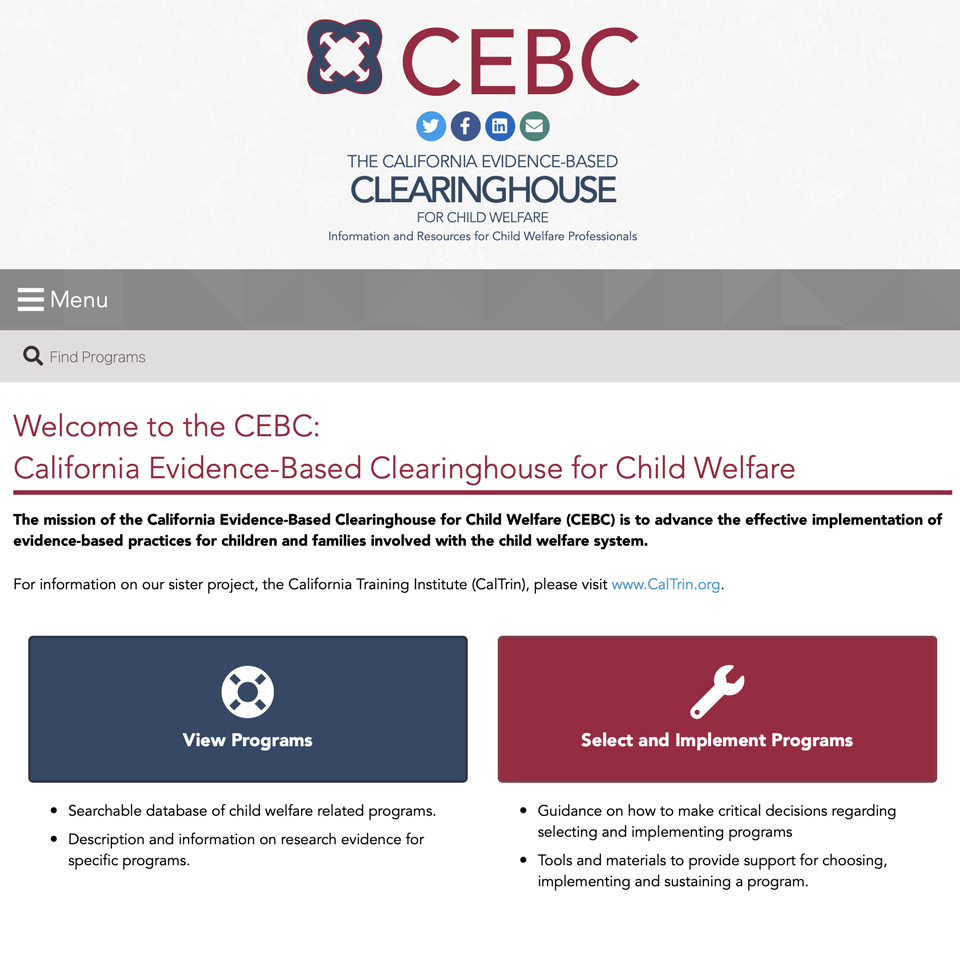
California Evidence-Based Clearinghouse (CEBC) for Child Welfare
The California Department of Social Services developed the CEBC to identify and disseminate information related to evidence-based practices relevant to child welfare. The clearinghouse ranks programs based upon their level of evidence around outcomes and implementation.
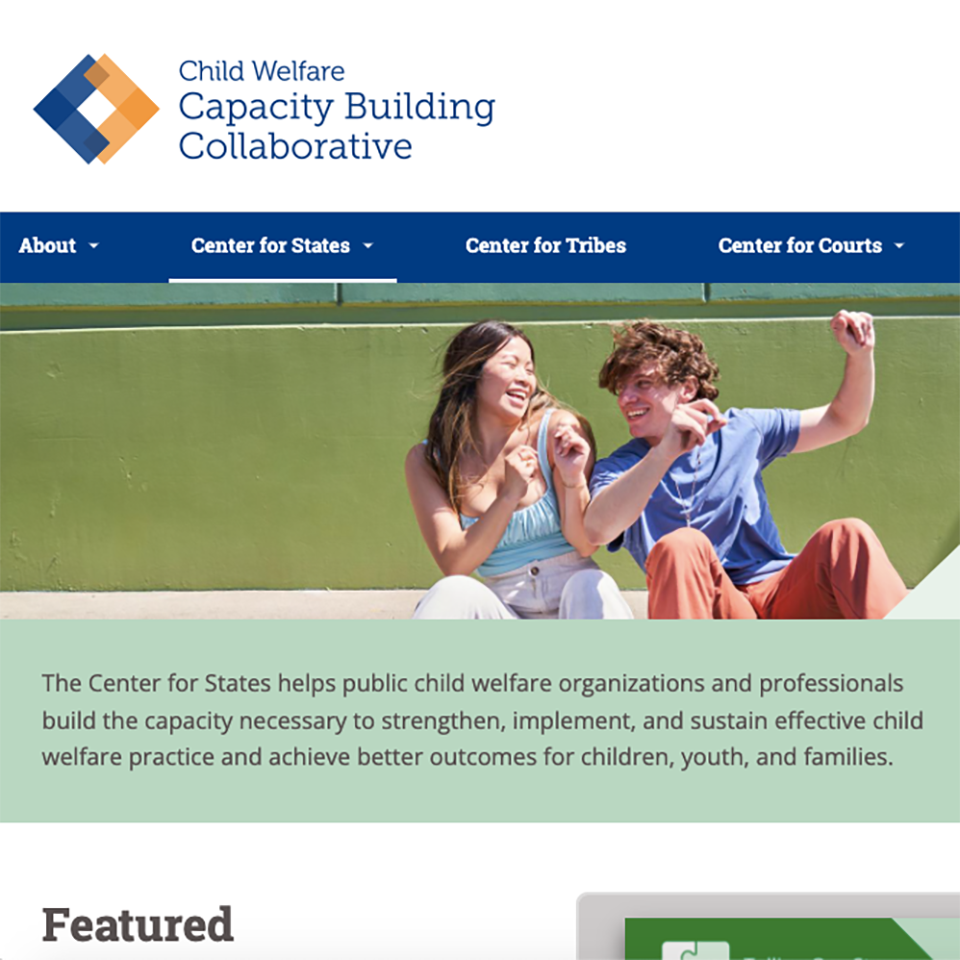
Child Welfare Capacity Building Collaborative
The Center for States helps public child welfare organizations and professionals build the capacity necessary to strengthen, implement, and sustain effective child welfare practice and achieve better outcomes for children, youth, and families.
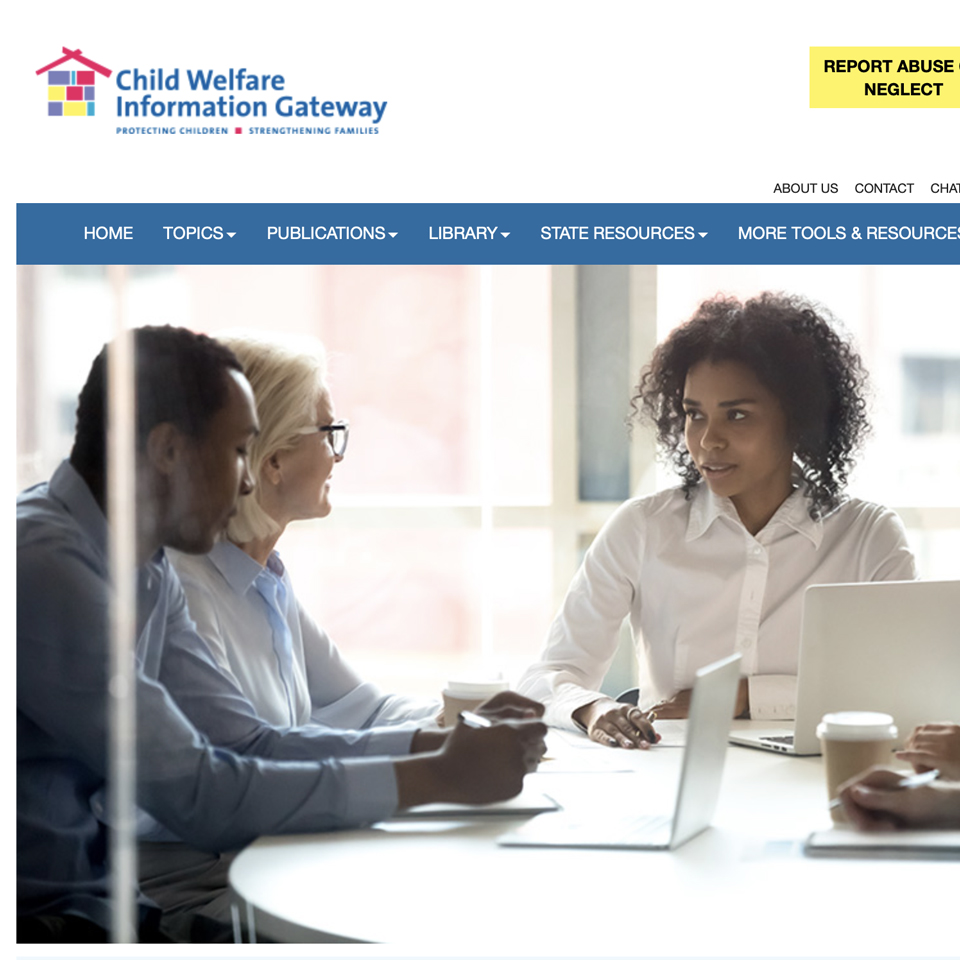
Child Welfare Information Gateway
Child Welfare Information Gateway promotes the safety, permanency, and well-being of children, youth, and families by connecting child welfare, adoption, and related professionals as well as the public to information, resources, and tools covering topics on child welfare, child abuse and neglect, out-of-home care, adoption, and more.
Resource Examples:
- Parent Education to Strengthen Families and Reduce the Risk of Maltreatment Brief
- What the research shows
- Evidence-based and evidence informed programs
- Preventing Child Abuse and Neglect Fact Sheet
- Protective factors
- Community-based primary prevention programs/services
- 2019 Prevention Resource Guide
- Information on Adverse Childhood Experiences (ACES)

Compassion Fatigue
Use this Life Stress Test to objectively evaluate the amount of pressure you are facing. As caregivers, we are often stressed and don’t know why. Without realizing the effects that life circumstances have on us, we tend to sweep our feelings of frustration, sadness, and turmoil under the rug.
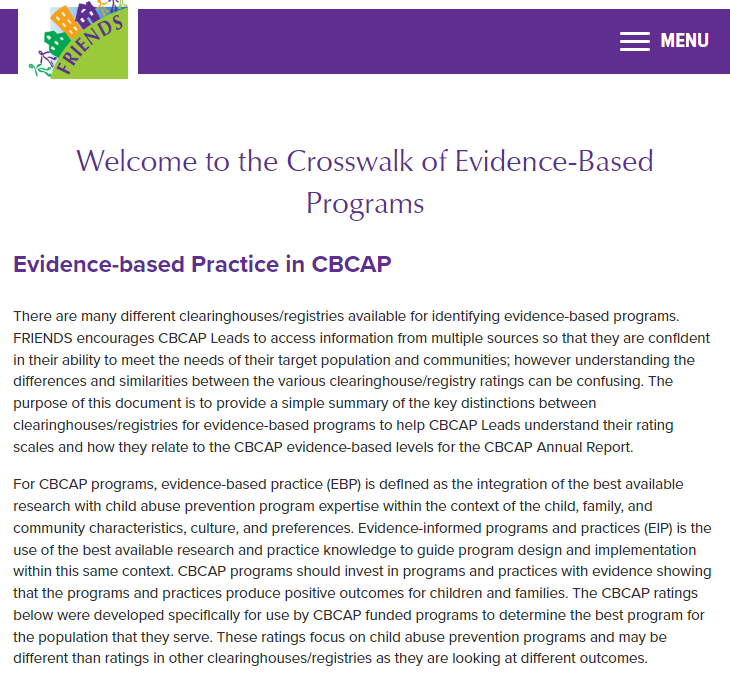
Crosswalk of Evidence-Based Programs
This Crosswalk is designed to provide information to community-based child abuse prevention (CBCAP) state lead agencies (SLAs) to assist in identifying programs they may want to consider funding. It is meant to be used as a starting point and is not an exhaustive list of available programs.
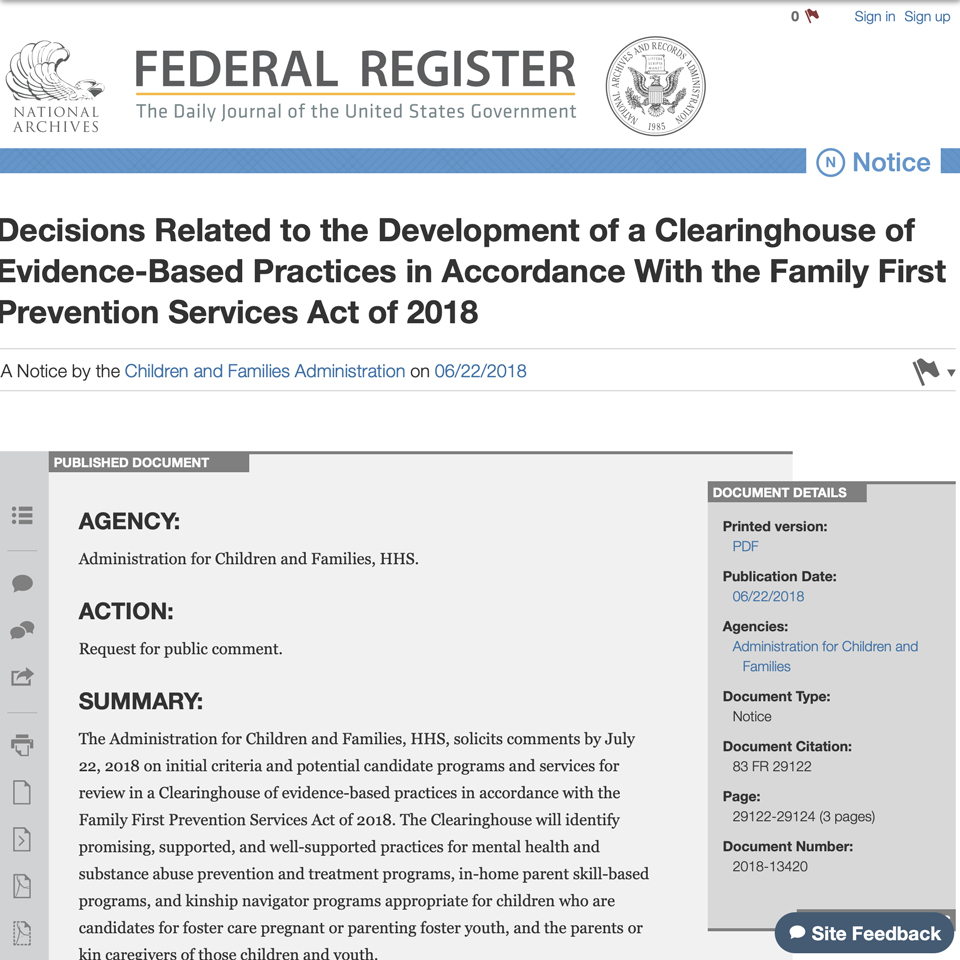
Determining Evidence-Base Levels
This FederalRegistry.gov document details levels of evidence in section 471(e)(4)(C) of the Families First Act and proposed criteria for inclusion in the Families First Clearinghouse.
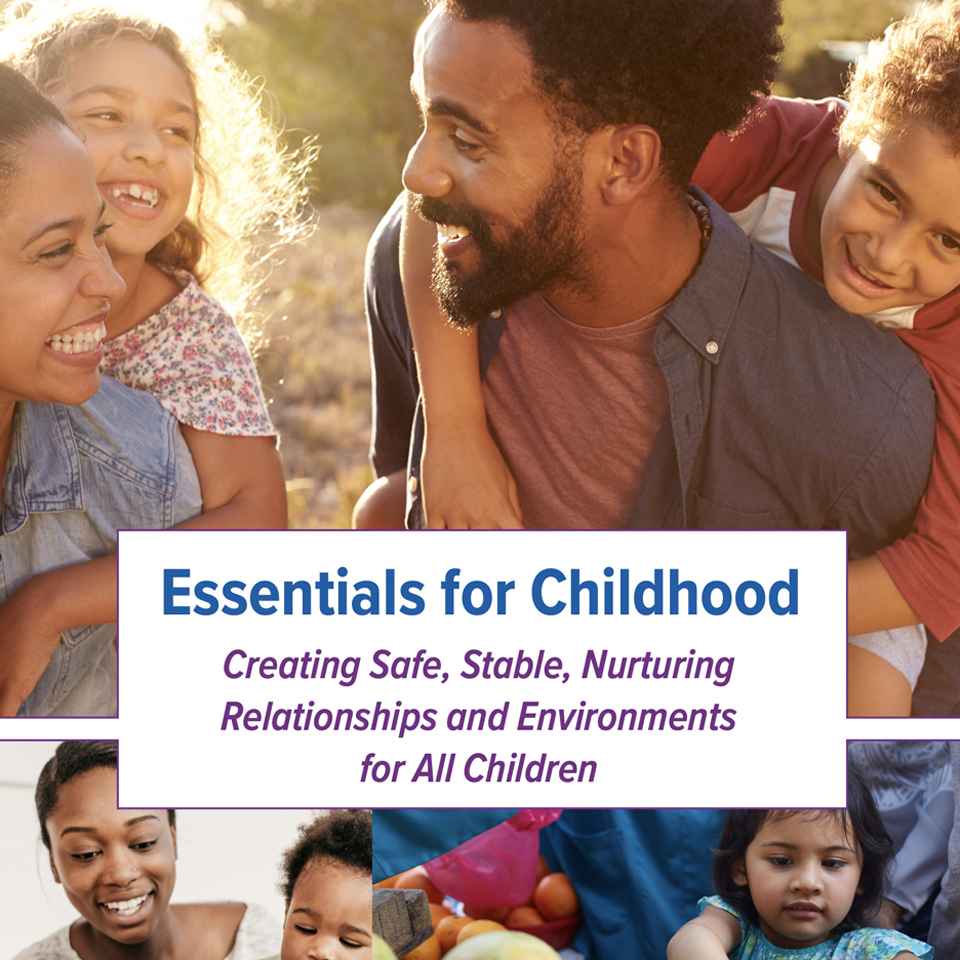
Essentials for Childhood Steps to Create Safe, Stable, Nurturing Relationships and Environments
Notes child maltreatment as a significant public health problem. Goals of guide: Raise awareness and commitment to promote safe, stable, nurturing relationships and environments and prevent child maltreatment. Use data to inform actions. Create the context for healthy children and families through norms change and programs. Create the context for healthy children and families through policies.

EvaluACTION
EvaluACTION walks you through the process of putting together an evaluation plan by explaining the steps of program evaluation and things to consider as you conduct one. EvaluACTION is based on CDC's Framework for Program Evaluation in Public Health.
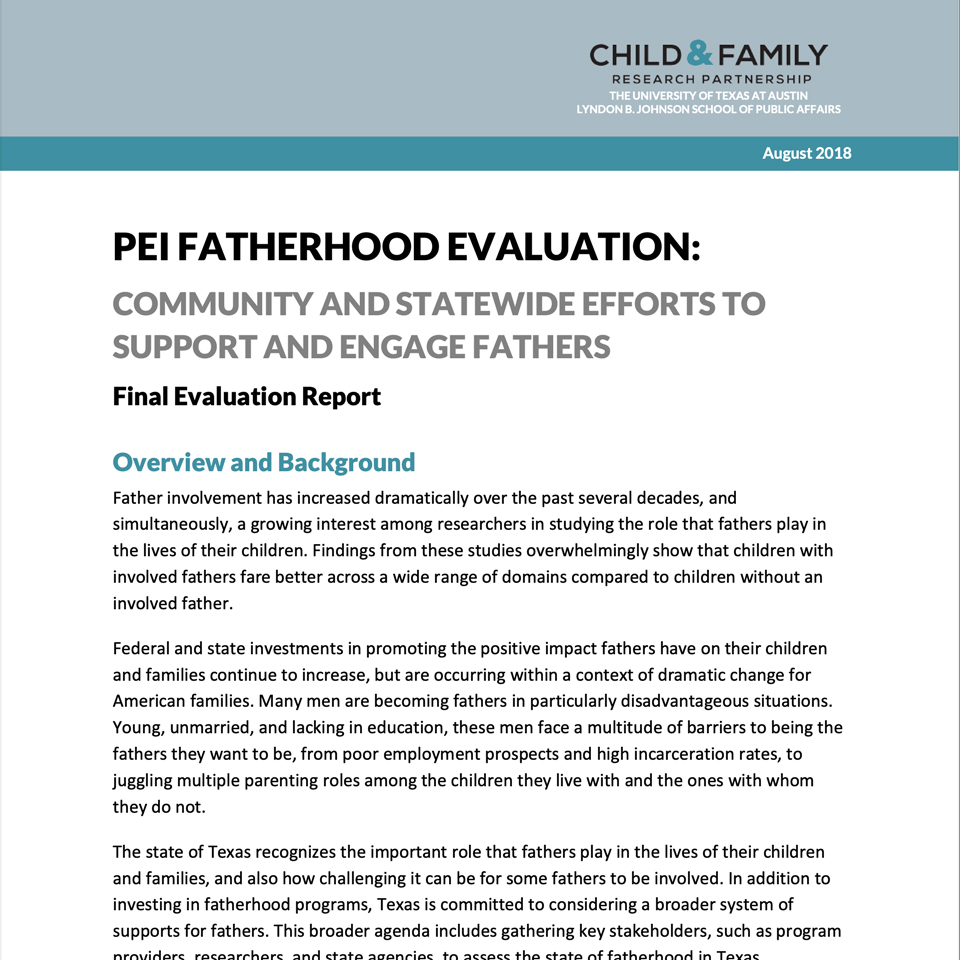
Fatherhood Final Report
In fiscal year 2018, the Child and Family Research Partnership (CFRP) supported the Texas Department of Family and Protective Services, Prevention and Early Intervention Division (PEI) in two fatherhood initiatives:
- Coordinating and convening interagency and cross-sector fatherhood councils at both the statewide and local levels
- Planning and hosting a third annual Fatherhood Summit.
This report summarizes progress made over the last fiscal year convening the Texas Fatherhood Interagency Council and the Central Texas Fatherhood Group, and provides an overview of the third annual Fatherhood Summit held in June 2018.
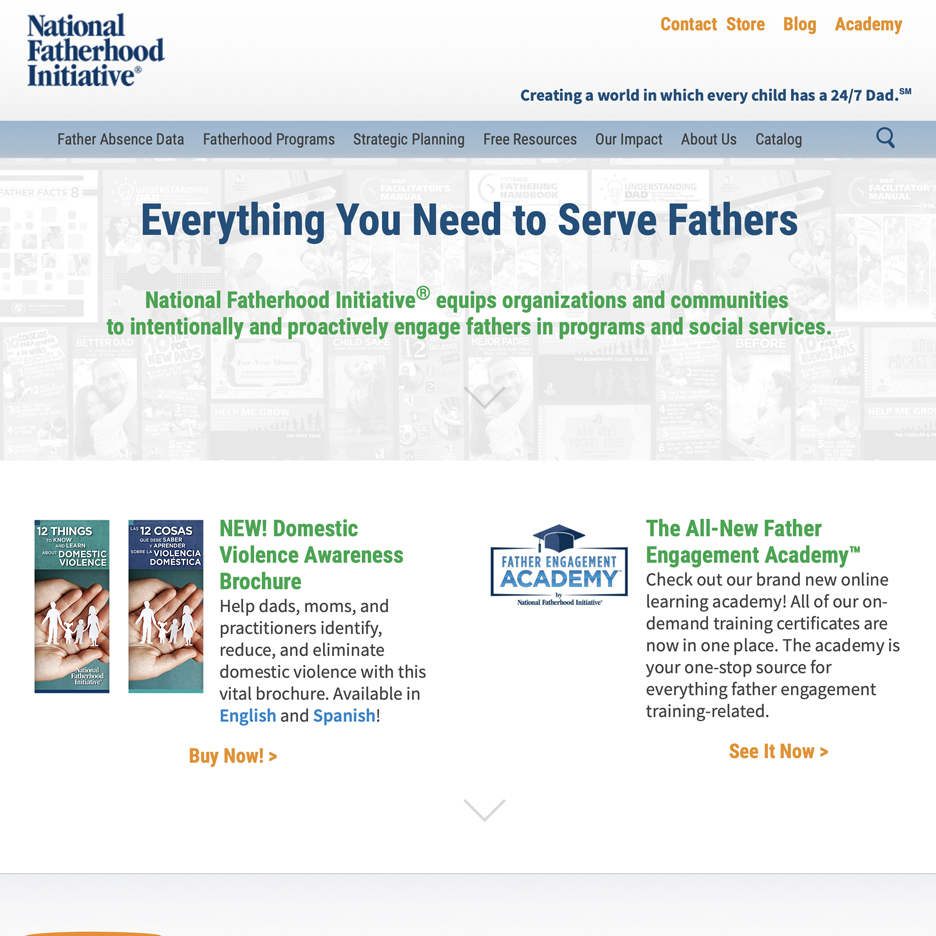
Fatherhood Resources for Dads and Organizations
The National Fatherhood Initiative (NFI) equips programs with knowledge, skills and resources to effectively engage fathers in their children’s lives.
This website provides resources for fathers to access directly:
- 24/7 Dad
- InsideOut Dad
- Understanding Dad
- Program evaluations
- Fatherhood research
- Evaluation instruments
- Ebooks
- On-demand webinars
NFI also has a community mobilization approach to mobilizing around responsible fatherhood.
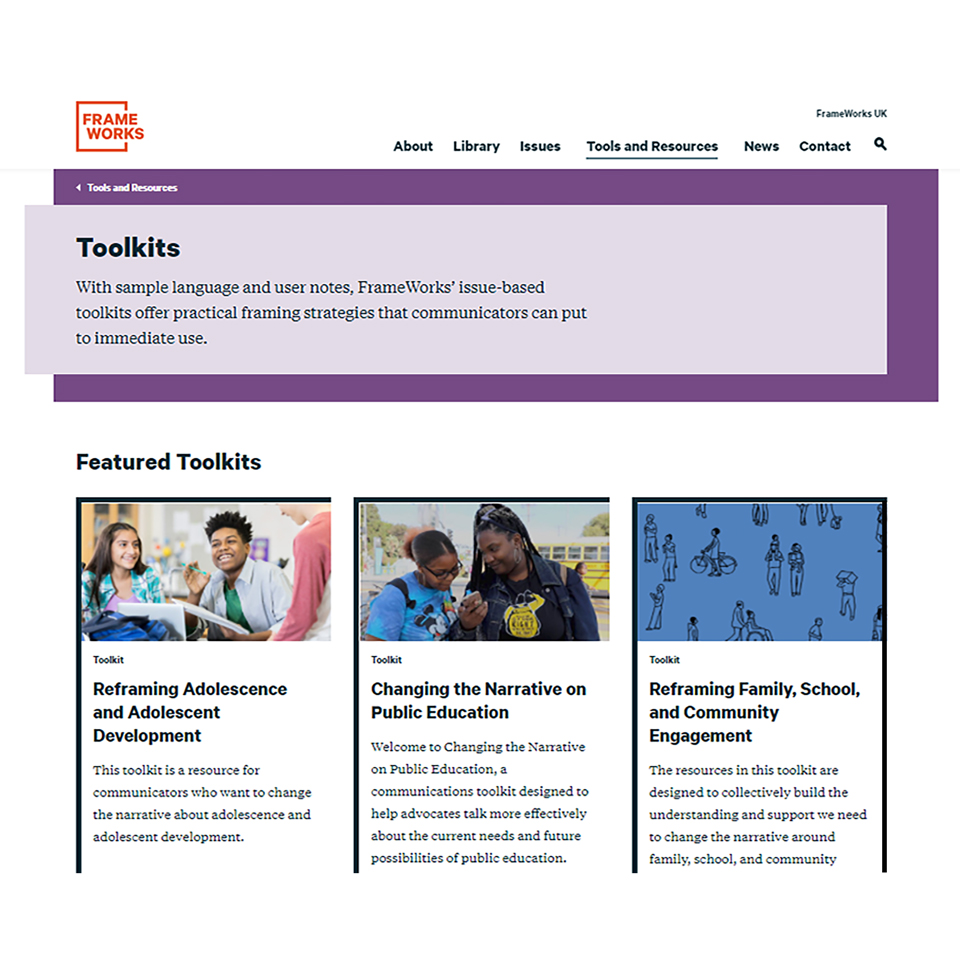
FrameWorks Toolkits
To make it easy for a field of advocates to get on frame, FrameWorks toolkits translate the findings of their research into formats that help guide advocacy communications. Contents include talking points, quick-start guides to the key shifts and core frame elements that are essential for reframing a particular issue, model responses to hot-topic questions, slides that can be added to advocates’ presentations, and “swiss cheese” editorials that organizations can customize for op/eds or blog posts.
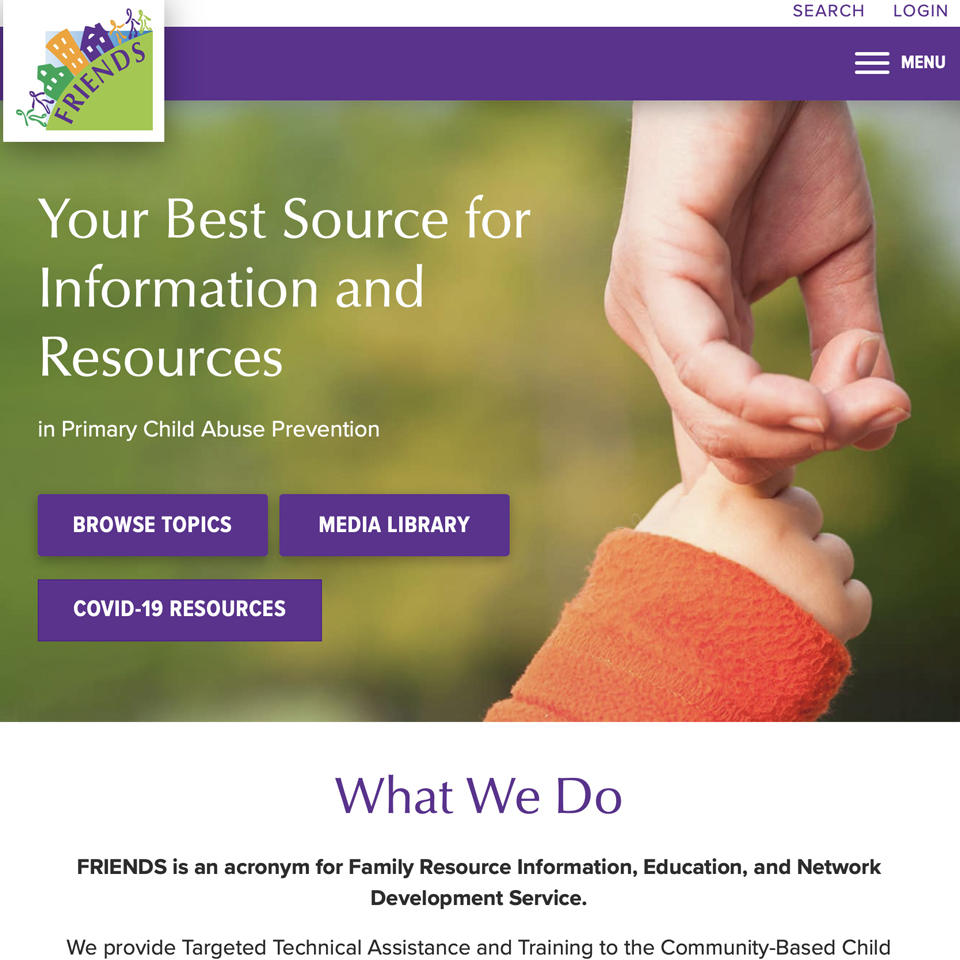
FRIENDS National Center for Community-Based Child Abuse Prevention (CBCAP)
FRIENDS is a Training and Technical Assistance Provider for CBCAP lead agencies.
Resource examples:
- Collaboration Toolkit
- Outcome Accountability
- Evaluation toolkit
- Continuous quality improvement
- Program assessment
- Protective factors surveys
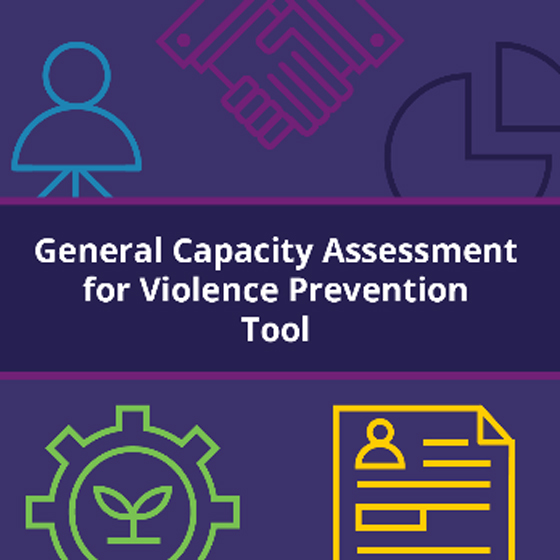
General Capacity Assessment for Violence Prevention
General Capacity Assessment for Violence Prevention helps assess your organization’s current capacity to start a violence prevention initiative and build your organization’s capacity to fully implement it. Your customized report helps you prioritize areas to focus on now and gives opportunities for growth in the future.
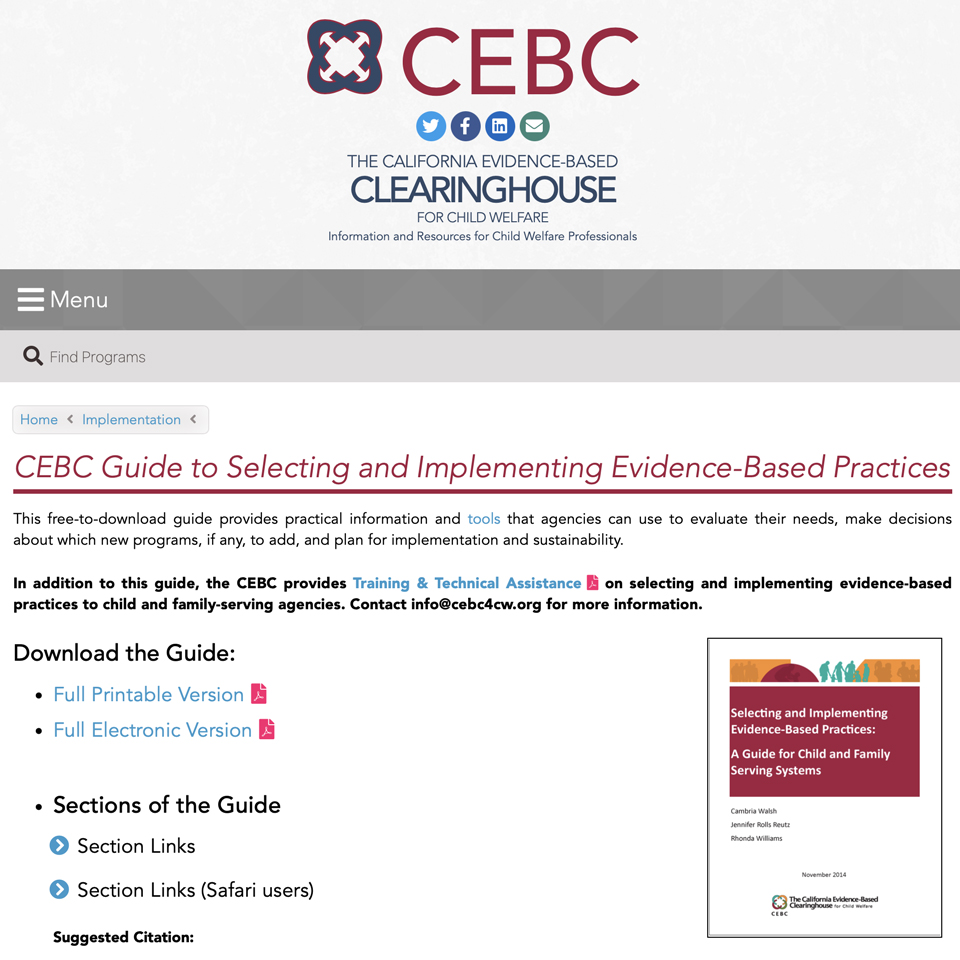
How to Choose an Evidence-Based Program
A guide to selecting and implementing evidence based programs, developed by the California Evidence-Based Clearinghouse (CEBC) to assist agencies in determining the fit between a program and their community needs.

IDEAS Impact Framework
The IDEAS Impact Framework is a toolkit for innovators in the field of early childhood. It provides a structured but flexible approach that facilitates program development, evaluation, and fast-cycle iteration to support positive outcomes for young children and families.
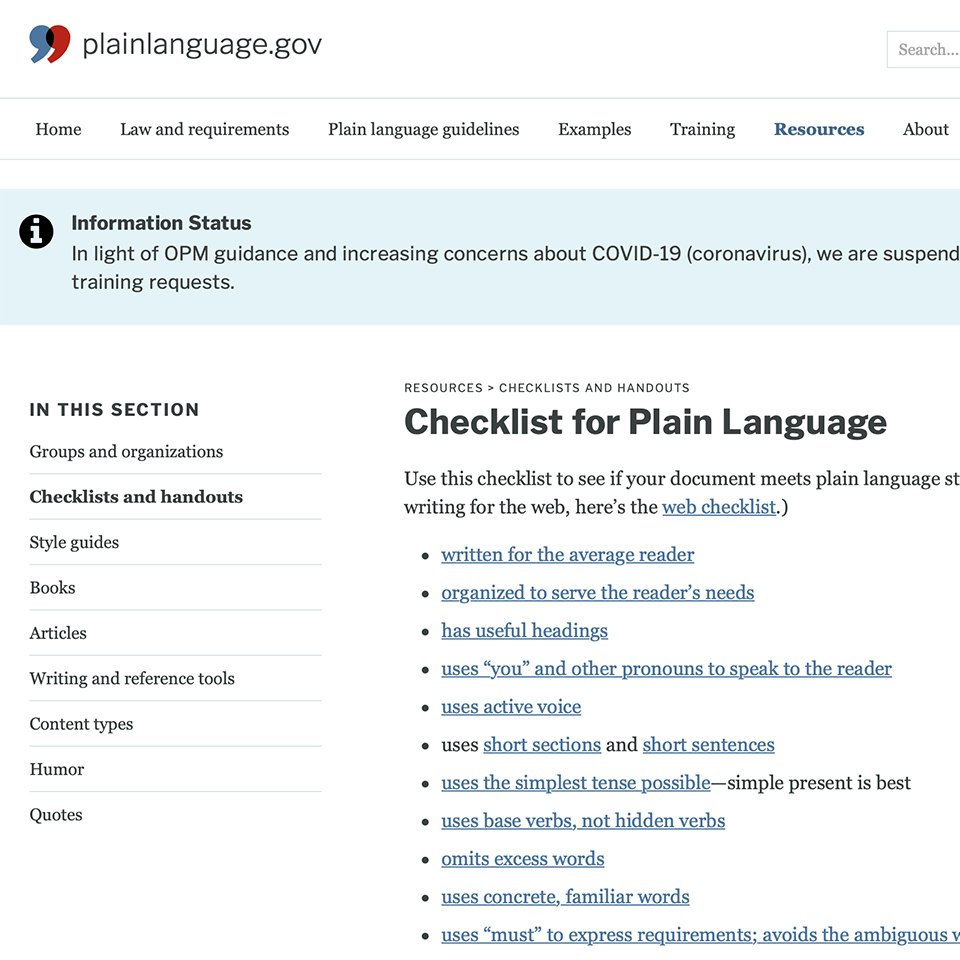
Messaging and Branding: Plain Language
Messaging and branding checklists and handouts:
- Checklist for plain language
- Style guides
- Books
- Aritcles
- Writing and reference tools
- Content types
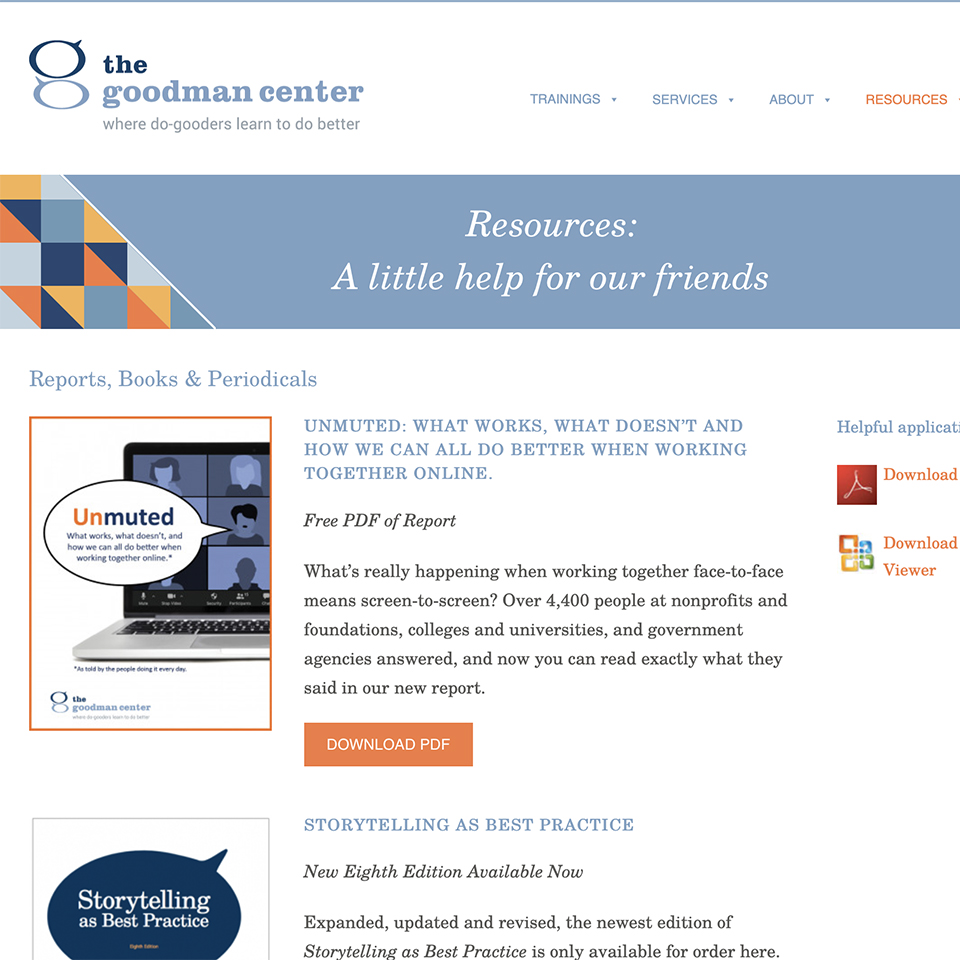
Messaging and Branding: The Goodman Center
Stories are your single most powerful communication tool. They help us remember, shape our identity, and influence how we see the world. Learn how to use stories in advocacy, development, recruiting and every aspect of your internal and external communications. Books and periodicals available through this site include:
- Storytelling best practices
- Why bad presentations happen to good causes
- Why bad ads happen to good causes
- Free-range thinking
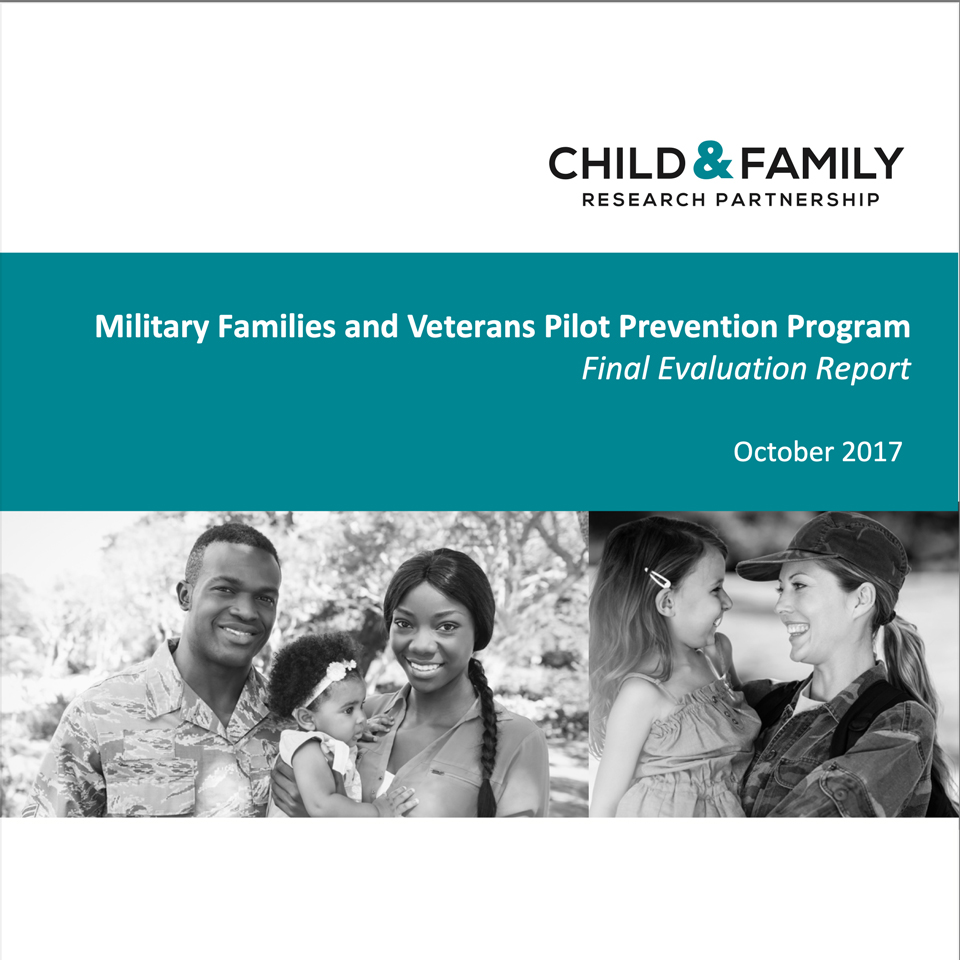
Military Final Report
This report serves as the final evaluation report by the Child and Family Research Partnership (CFRP) at the University of Texas at Austin’s LBJ School of Public Affairs on the Military Families and Veterans Prevention Program (MVP). Further, this report reviews the unique context of each military community participating in the program and outlines the structure each community created for their MVP program.
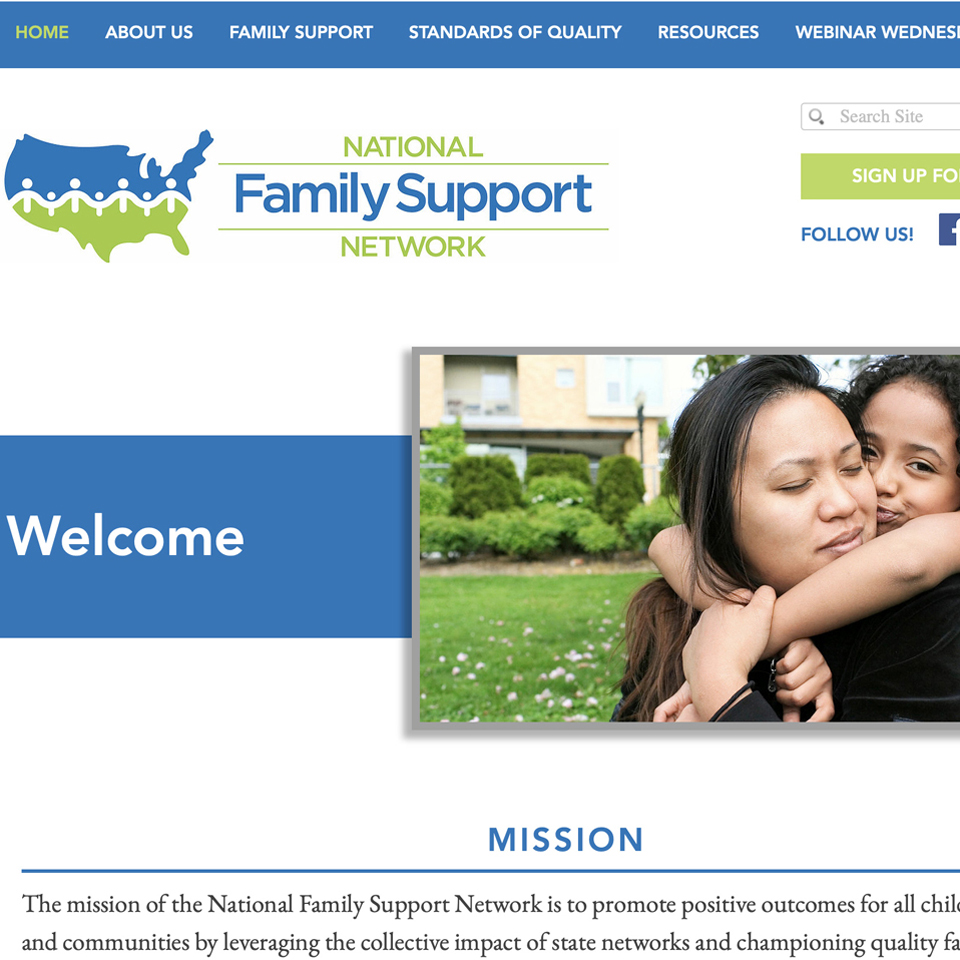
National Family Support Network
The mission of the National Family Support Network is to promote positive outcomes for all children, families, and communities by leveraging the collective impact of state networks and championing quality family support and strengthening practices and policies.
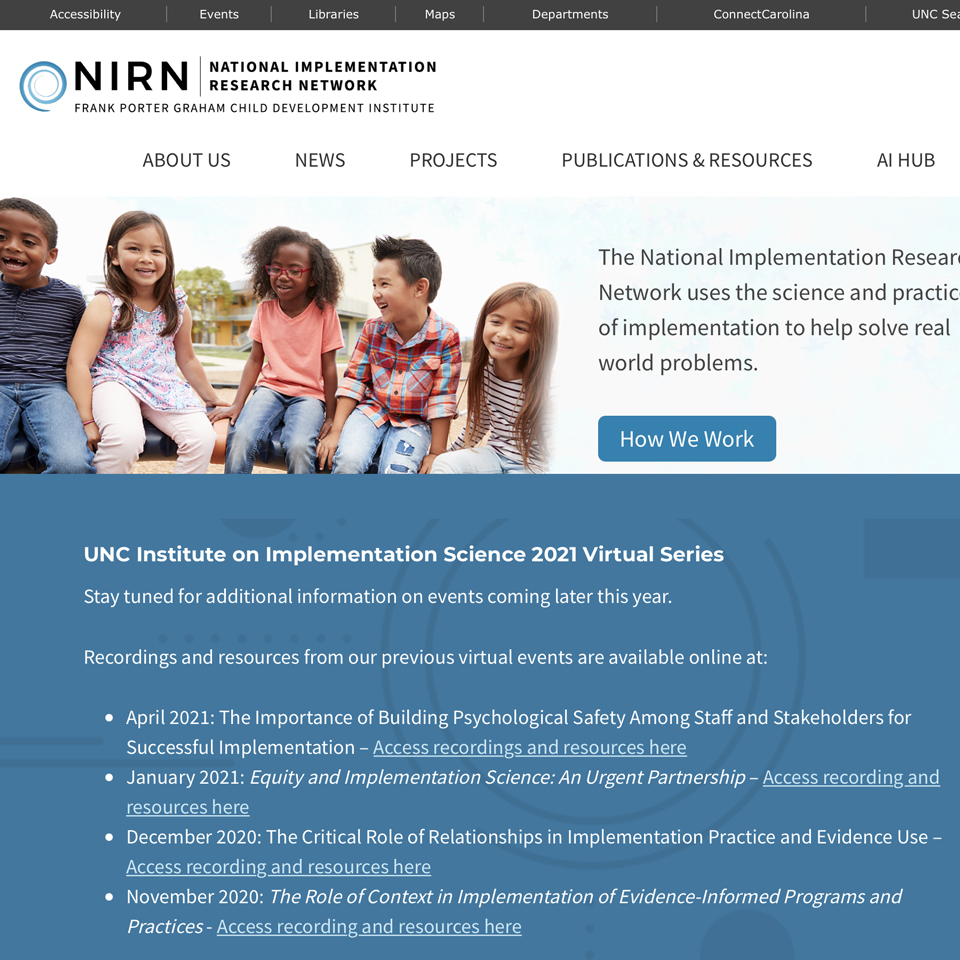
Program Implementation
The mission of the National Implementation Research Network (NIRN) is to contribute to the best practices and science of implementation, organization change, and system reinvention to improve outcomes across the spectrum of human services. NIRN provides tools and best practices to help communities improve program implementation.
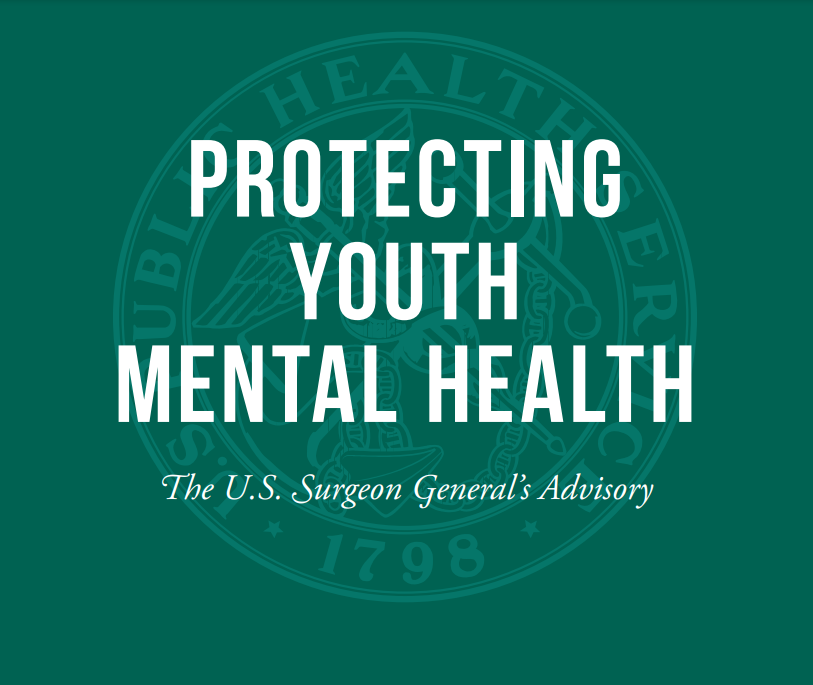
Protecting Youth Mental Health
The U.S. Surgeon General released this 2021 advisory to provide context regarding youth mental health during and after the COVID-19 Pandemic. Steps to address this concern are also provided.
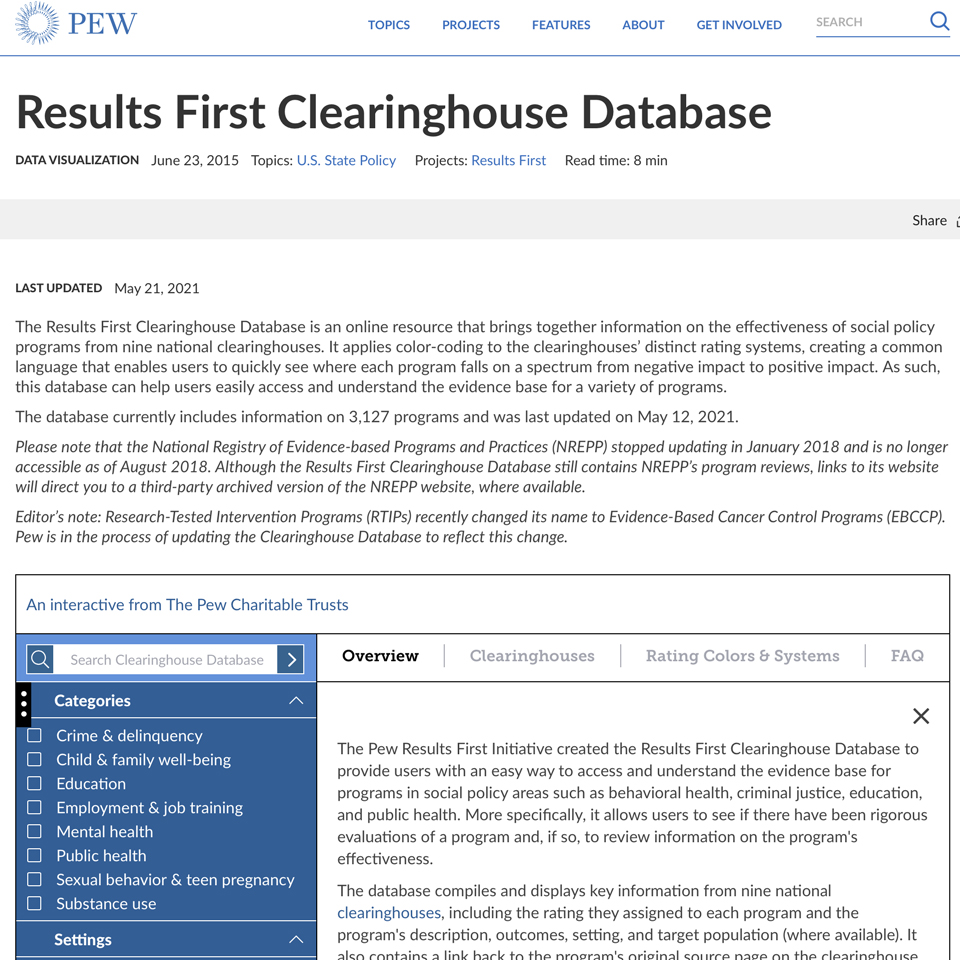
Results First Clearing House Database
The Results First Clearinghouse Database is an online resource that brings together information on the effectiveness of social policy programs from nine national clearinghouses. It applies color-coding to the clearinghouses’ distinct rating systems, creating a common language that enables users to quickly see where each program falls on a spectrum from negative impact to positive impact.
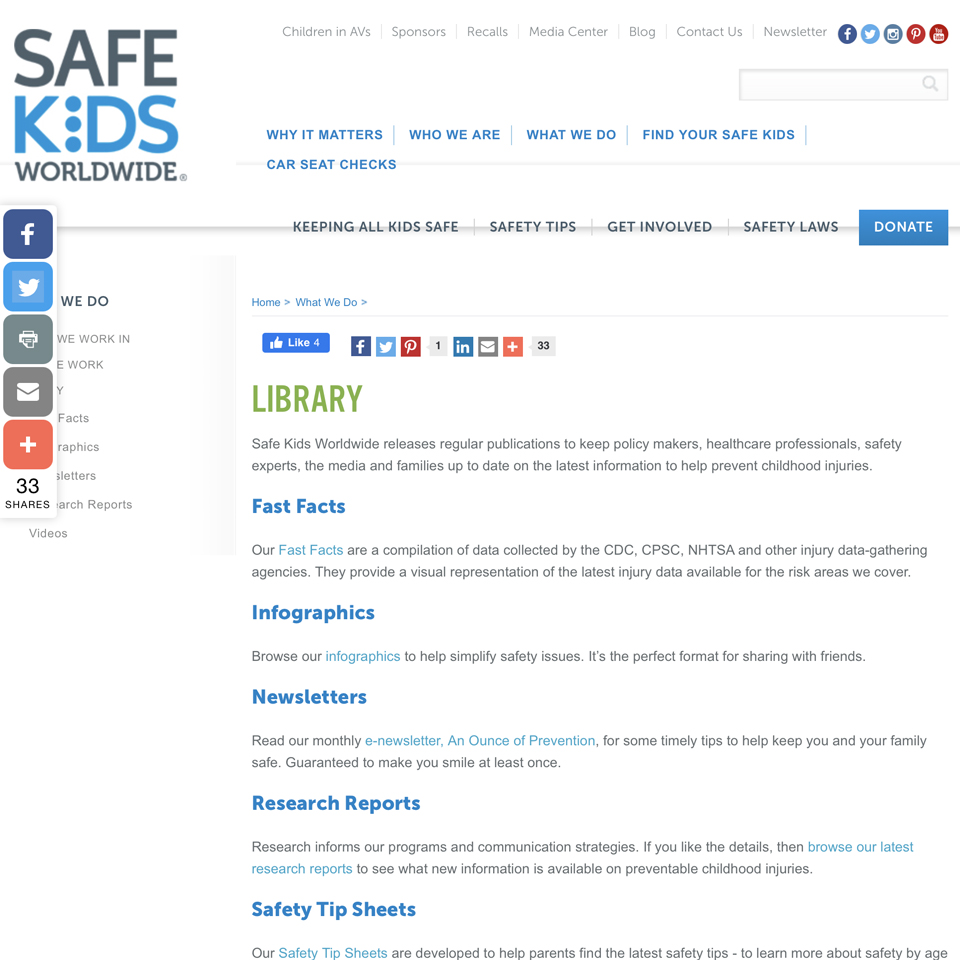
Safe Kids Worldwide
Safe Kids Worldwide is a nonprofit organization working to help families and communities keep kids safe from injuries. Most people are surprised to learn preventable injuries are the #1 killer of kids in the United States. Throughout the world, almost one million children die of an injury each year, and almost every one of these tragedies is preventable.
This website includes:
- Fact sheets
- Infographics
- Newsletters
- Research reports
- Safety tip sheet
- Educational videos

Safe Sleep Final Report
SUMA Social Marketing, Inc. (SUMA) conducted qualitative research on behalf of the Texas Department of Family and Protective Services (DFPS) to determine sleep safety and sleep-related infant death risk-reduction practices, perceptions, beliefs, and barriers among priority audiences in Texas, with the goal of informing current programming and a future communications campaign to reduce infant mortality as it relates to unsafe sleep and sleep-related infant deaths.

Secondary Trauma Stress (STS)
The National Child Traumatic Stess Network website offers child-serving professionals information about secondary traumatic stress (STS). The fact sheet in this link describes how individuals experience STS and offers an understanding of who is at risk, how to identify STS, strategies for prevention and intervention, and essential elements to address STS.

Seeking Equity Calls Us to Cultural Humility
The movement toward prevention and racial equity requires a deep examination of the harm that children—particularly Black and Native American/Alaska Native children—have experienced in the child welfare system and an intentional adoption of culturally responsive services driven by the needs and expertise of children, youth, and families.
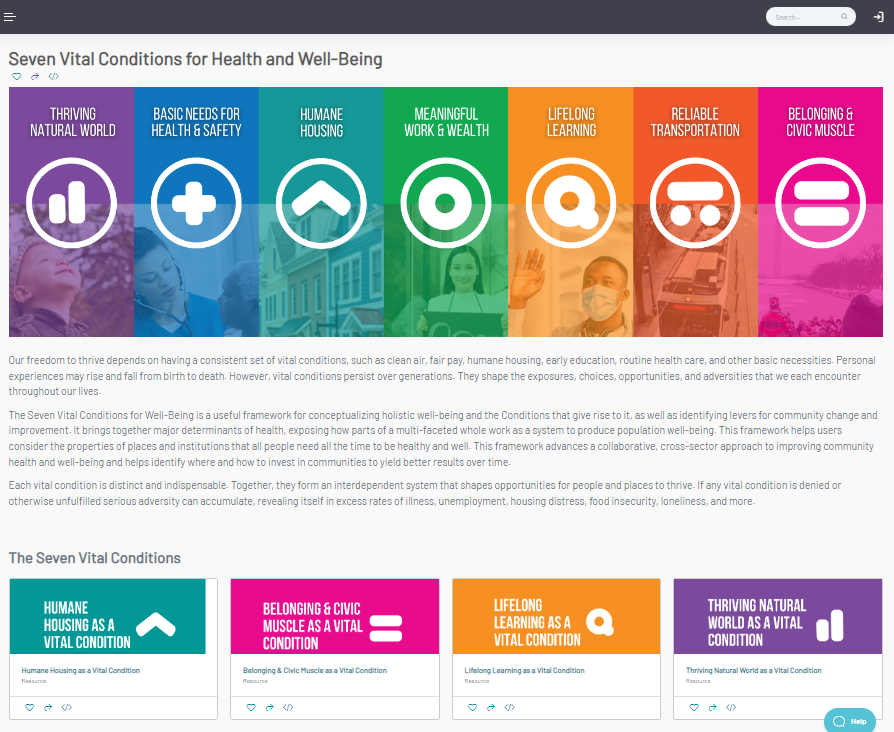
Seven Vital Conditions for Well-Being Framework
"Seven Vital Conditions for Well-Being" is a useful framework for conceptualizing holistic well-being and the conditions that give rise to it, as well as identifying levers for community change and improvement.
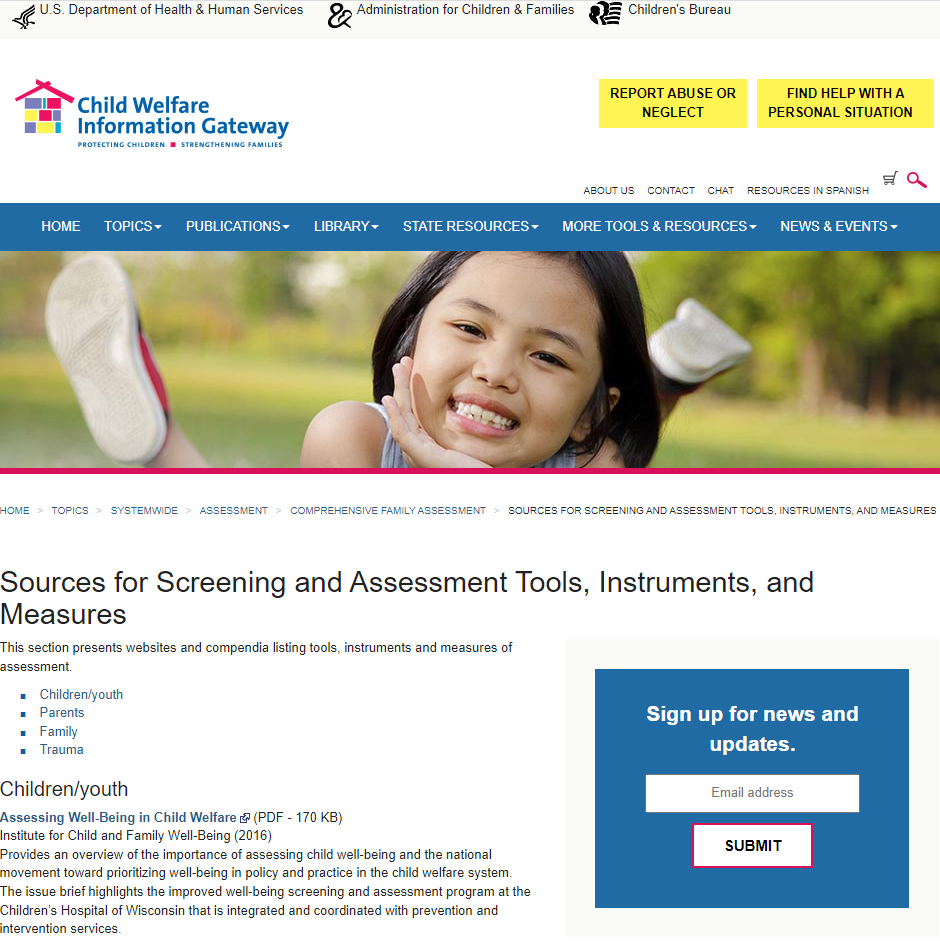
Sources for Screening and Assessment Tools, Instruments, and Measures
This section presents websites and compendia listing tools, instruments and measures of assessment which are useful for:
- Children/youth
- Parents
- Family
- Trauma
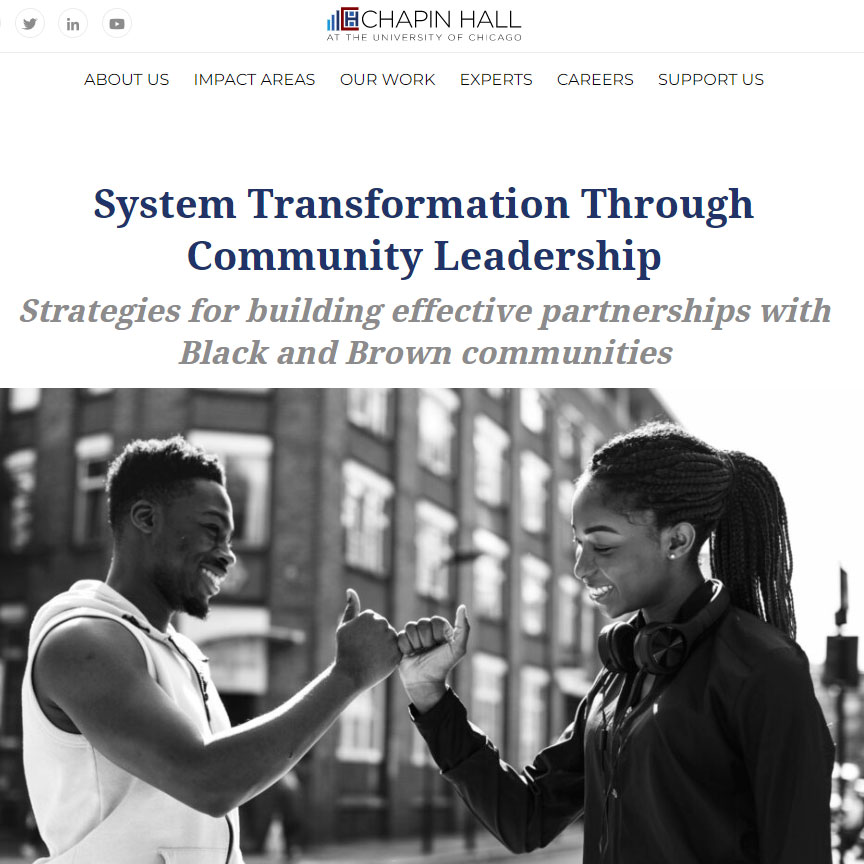
System Transformation Through Community Leadership
Strategies for building effective partnerships with Black and Brown communities. Includes strategies for system leaders to promote community ownership and involvement.
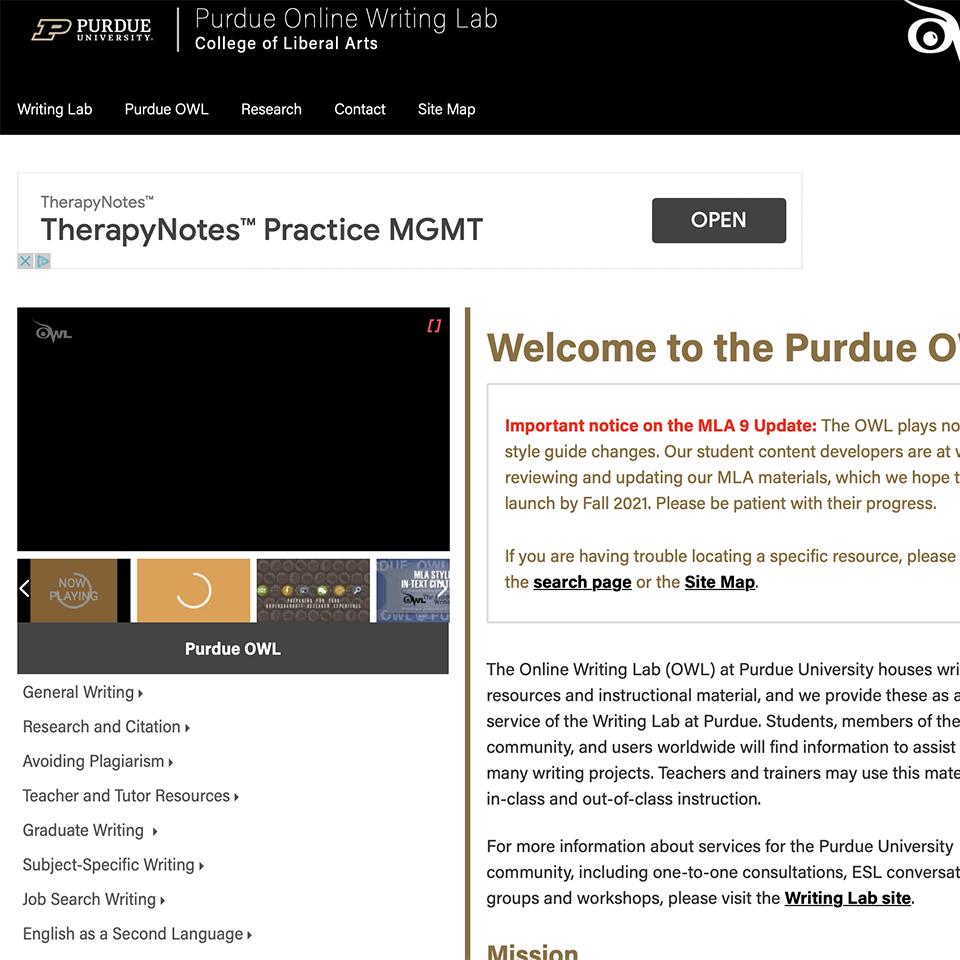
The Online Writing Lab (OWL)
The Online Writing Lab (OWL) at Purdue University houses writing resources and instructional material, and provides these as a free service of the Writing Lab at Purdue. Students, members of the community, and users worldwide will find information to assist with many writing projects. Teachers and trainers may use this material for in-class and out-of-class instruction.
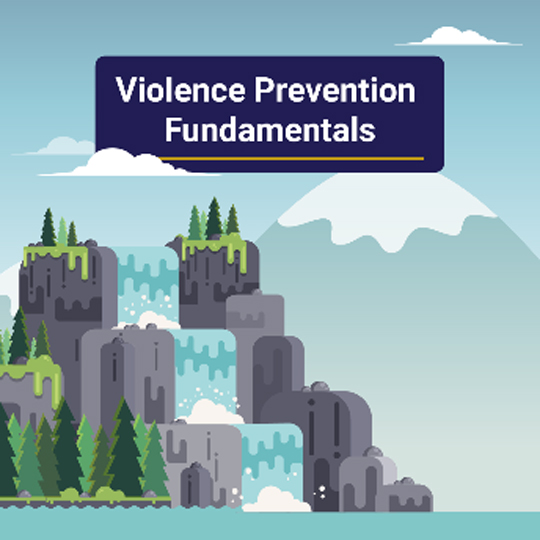
Violence Prevention Fundamentals
Violence Prevention Fundamentals outlines the four steps in the public health approach, highlights the timing of prevention efforts, and shows risk and protective factors to know at every level of the social-ecological model.
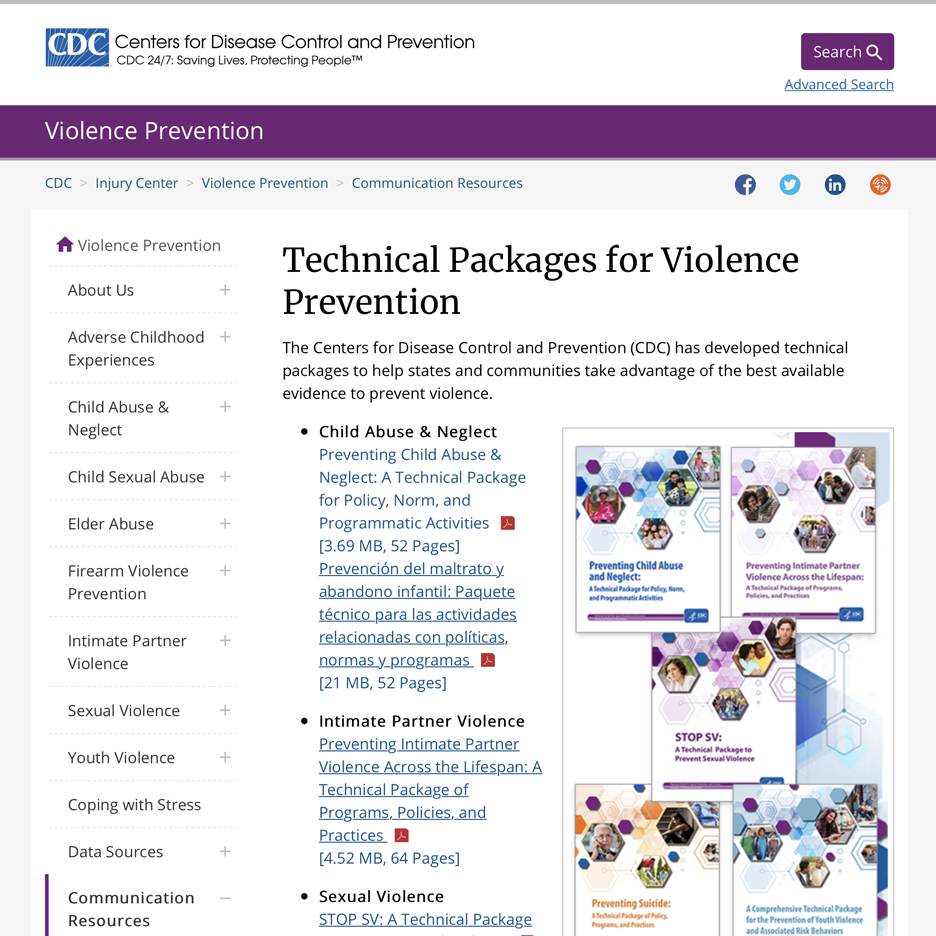
Violence Prevention Technical Packages
Use evidence-based strategies in your violence prevention efforts.
The Centers for Disease Control and Prevention (CDC) has developed technical packages to help states and communities take advantage of the best available evidence to prevent violence.
Each package includes:
- Strategy: Lays out the direction or actions to achieve the goal of preventing violence.
- Approach: Includes the specific ways to advance the strategy. This can be accomplished through programs, policies, and practices.
- Evidence: The evidence for each of the approaches in preventing violence or its associated risk factors is included as the third component.
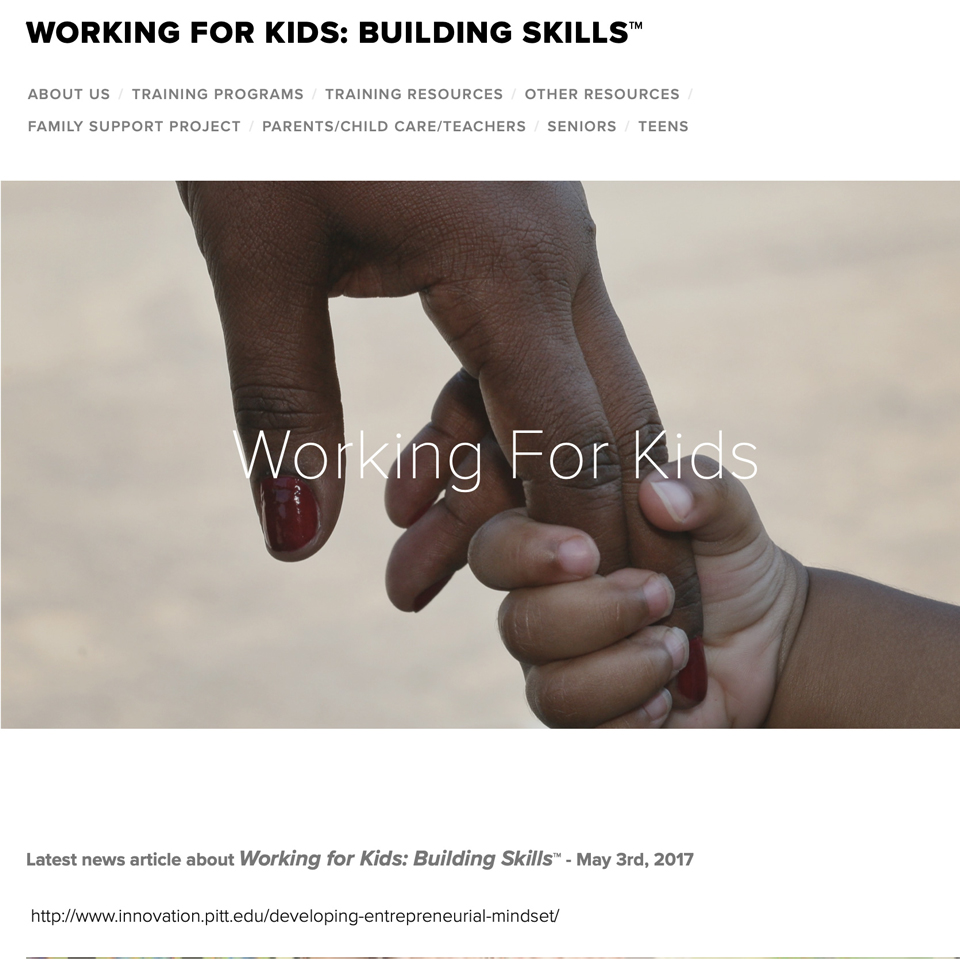
Working for Kids
A community-based educational program that takes an intergenerational approach to putting children on a positive trajectory for success in school and in life.
This program has two components:
- A community training program that teaches how children develop strong brain pathways to support skill development
- Aa skills and health evaluation program that works with community partners to evaluate the positive benefits of the training program
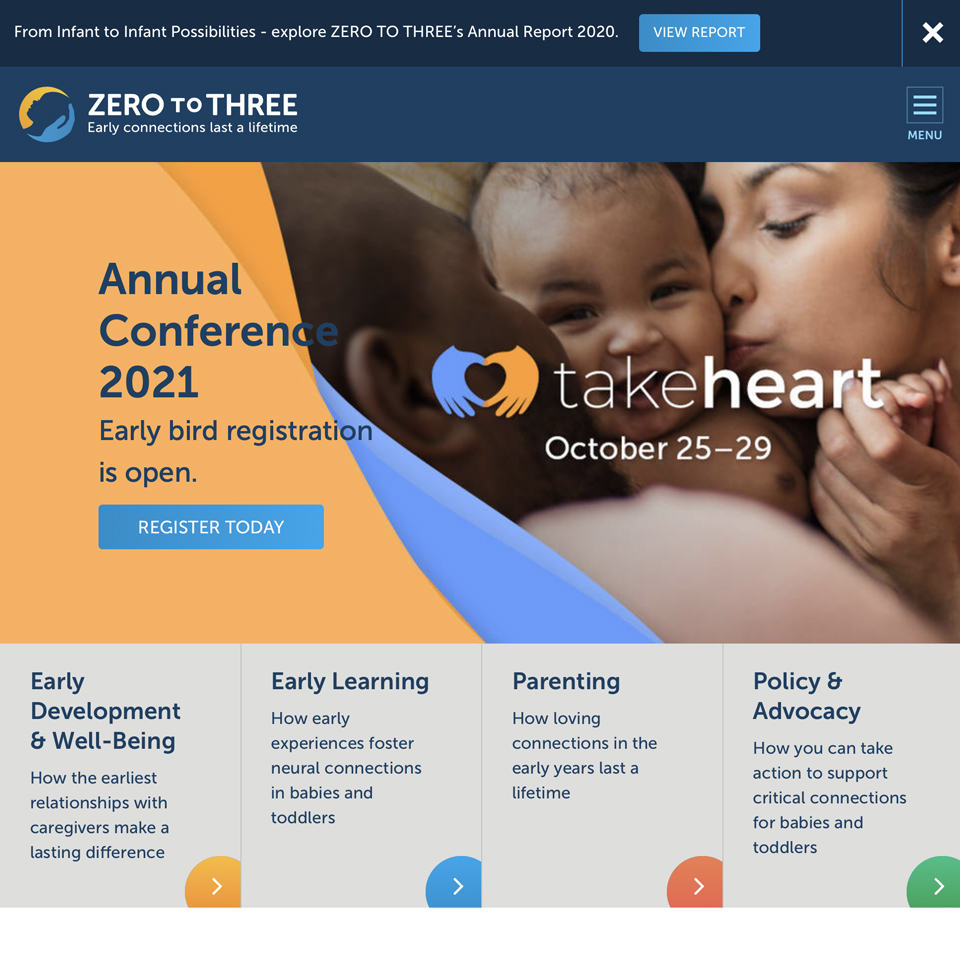
ZERO to THREE
ZERO TO THREE works to ensure that babies and toddlers benefit from the early connections that are critical to their well-being and development. ZERO TO THREE has advanced the proven power of nurturing relationships by transforming the science of early childhood into helpful resources, practical tools and responsive policies for millions of parents, professionals and policymakers. They focus on the following topics:
- Early development and well-being
- Early learning
- Parenting
- Policy and advocacy